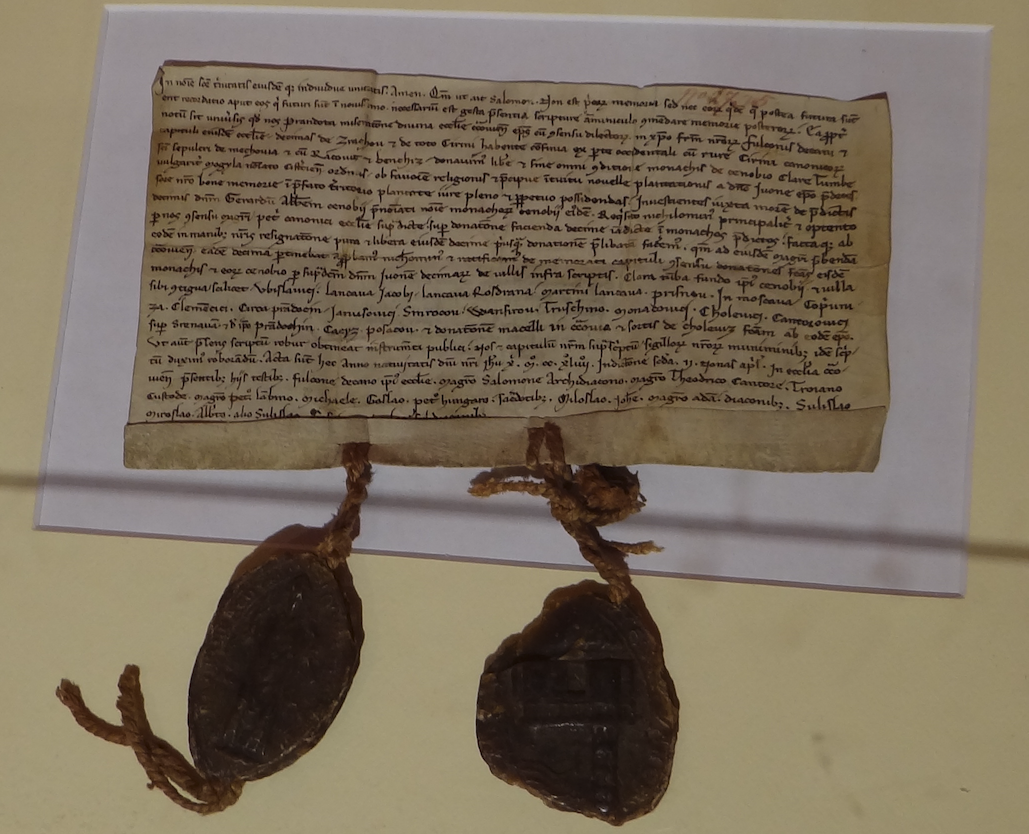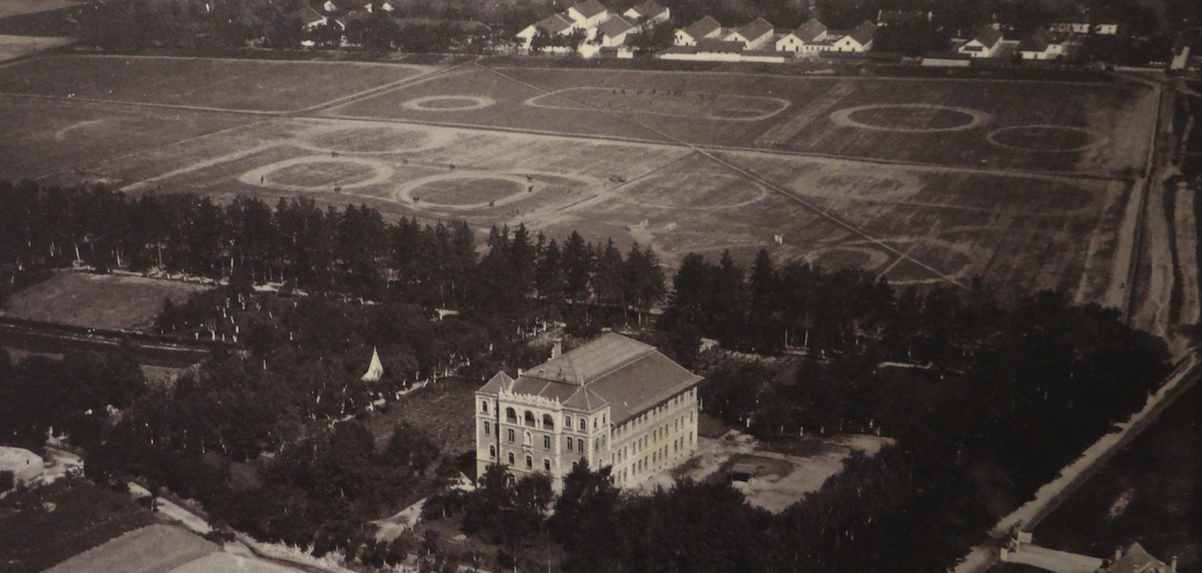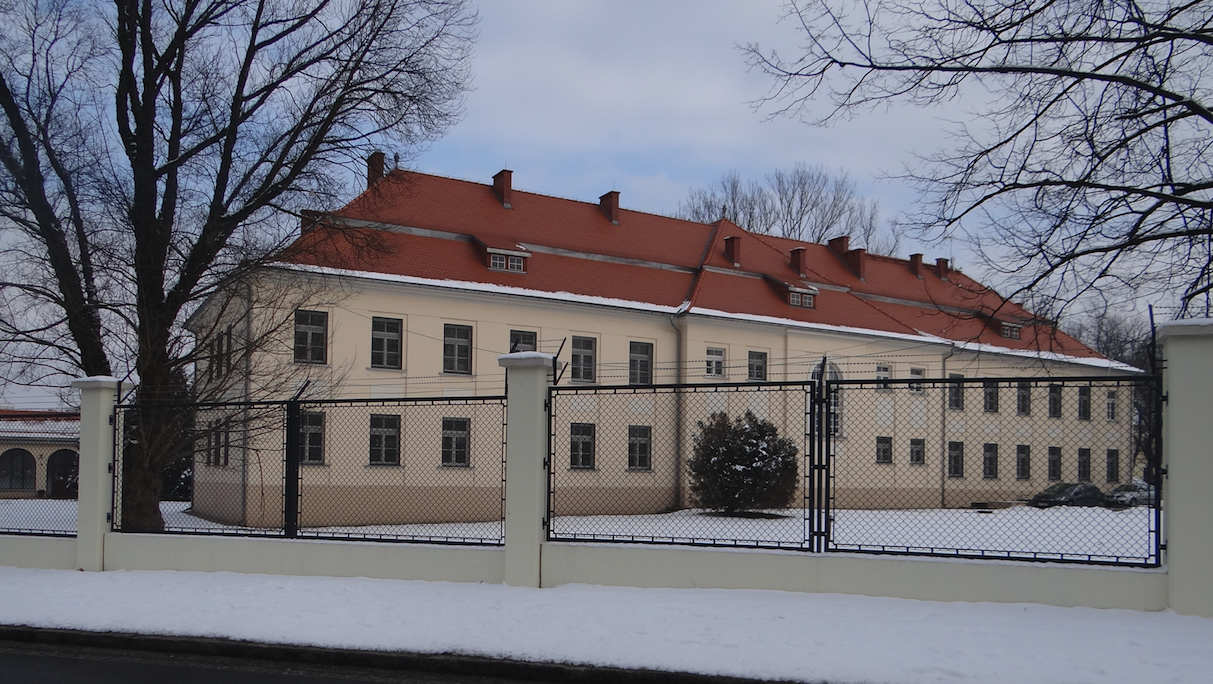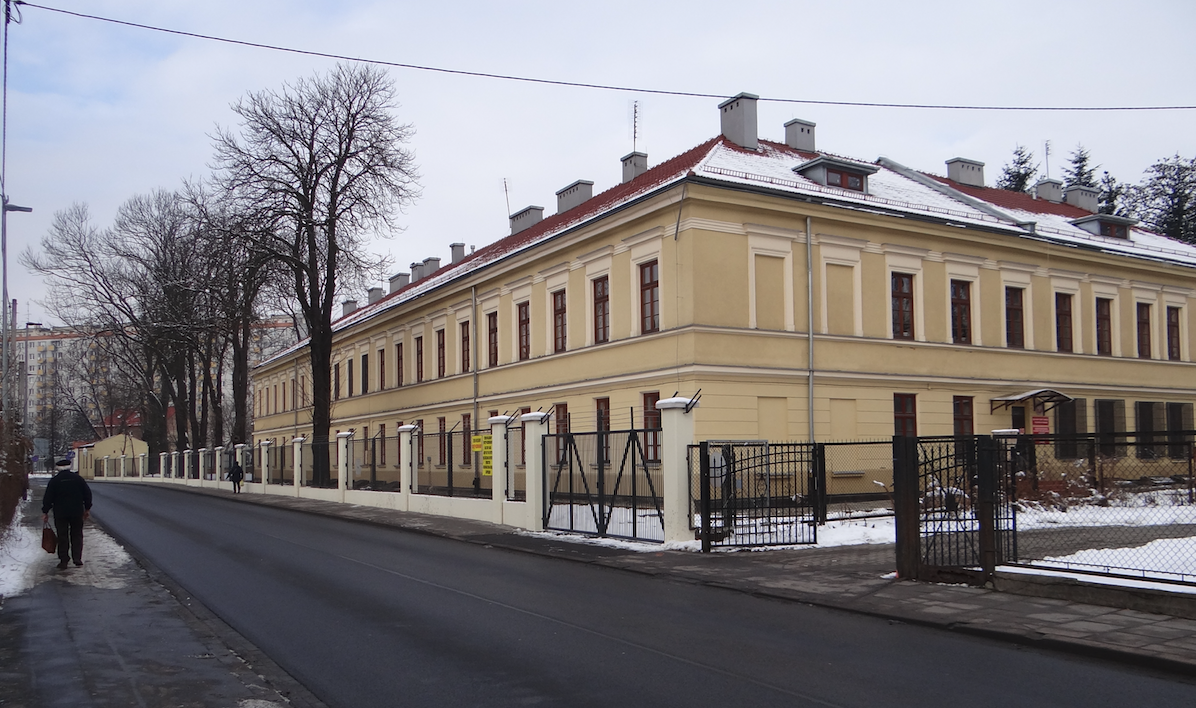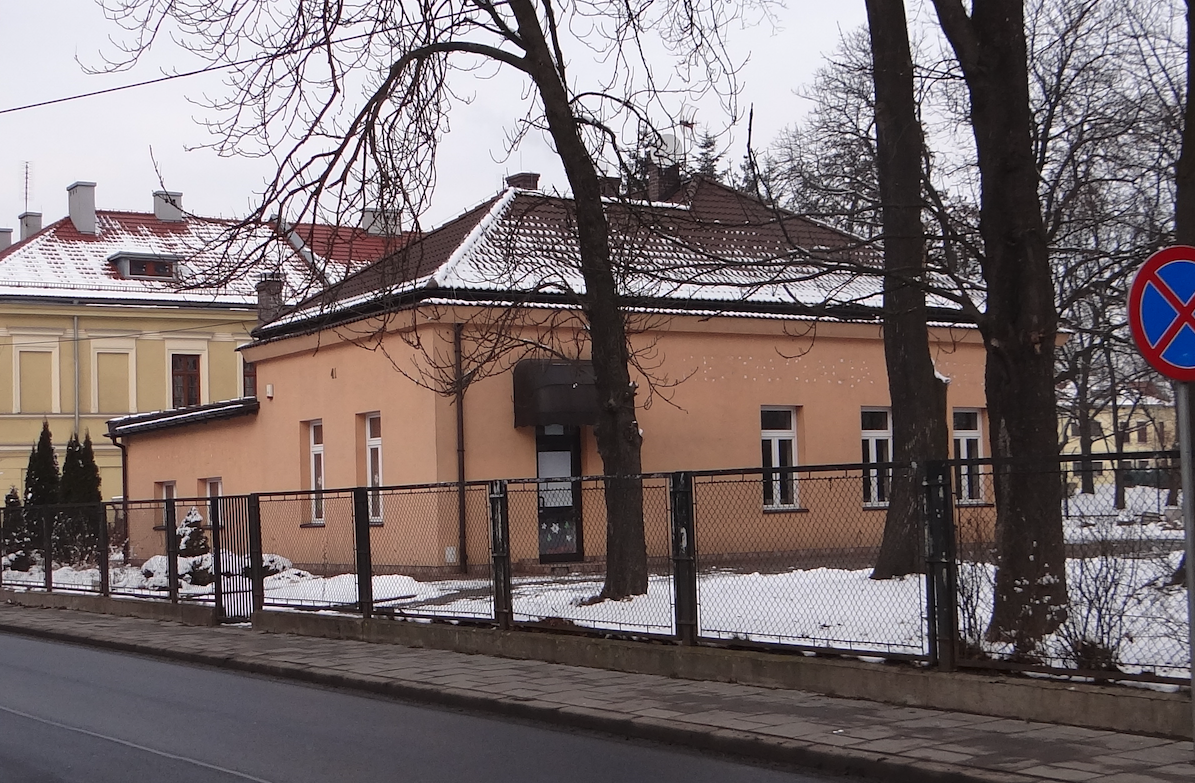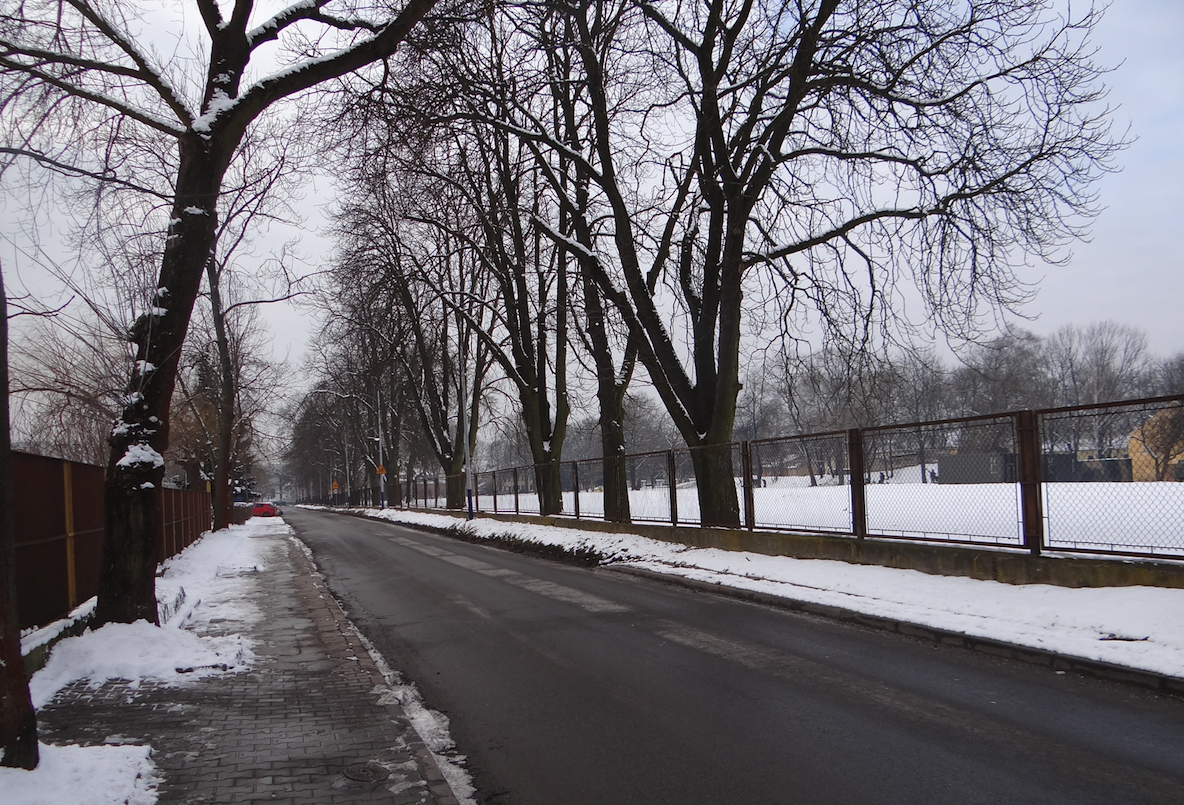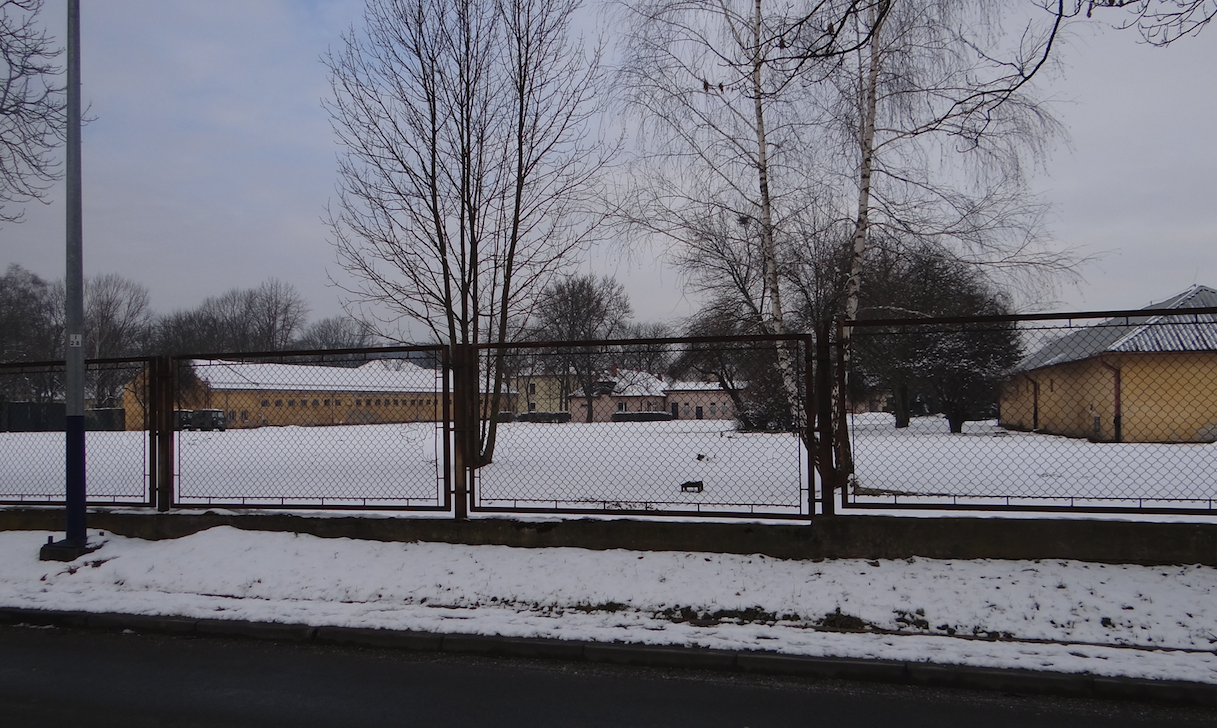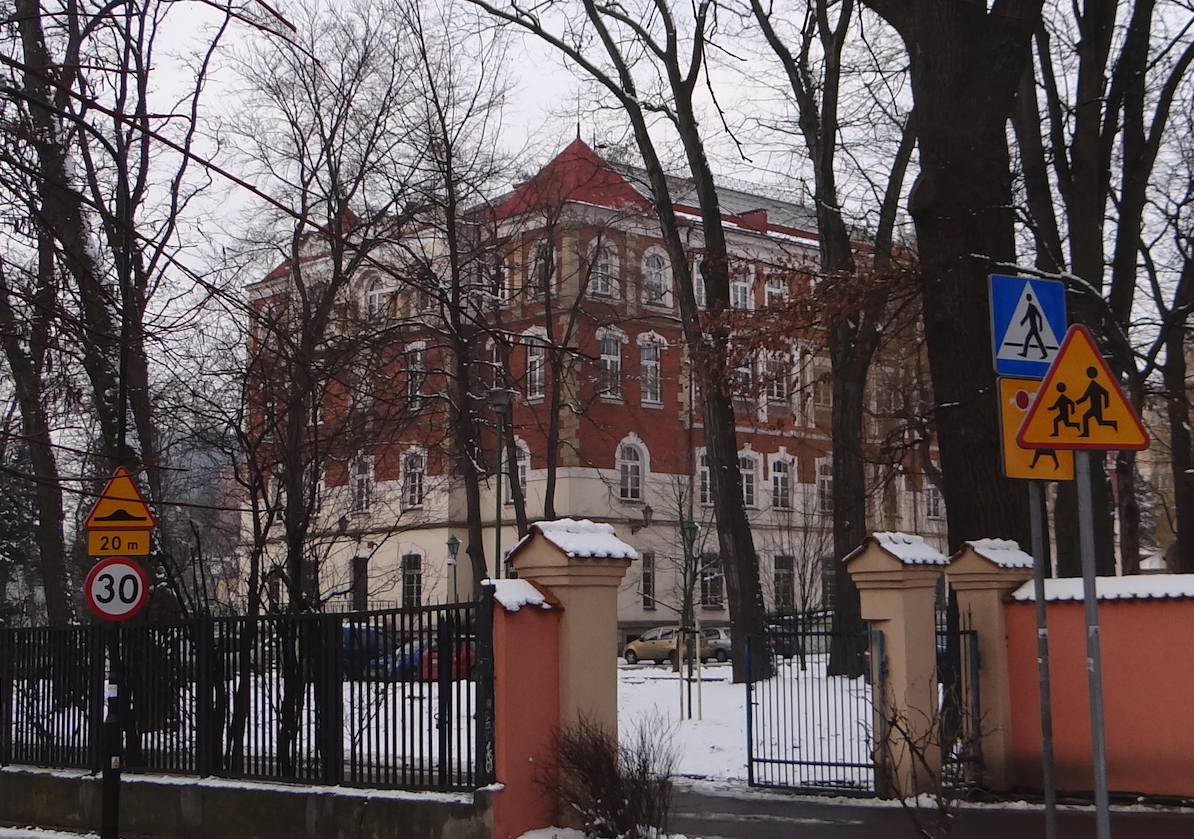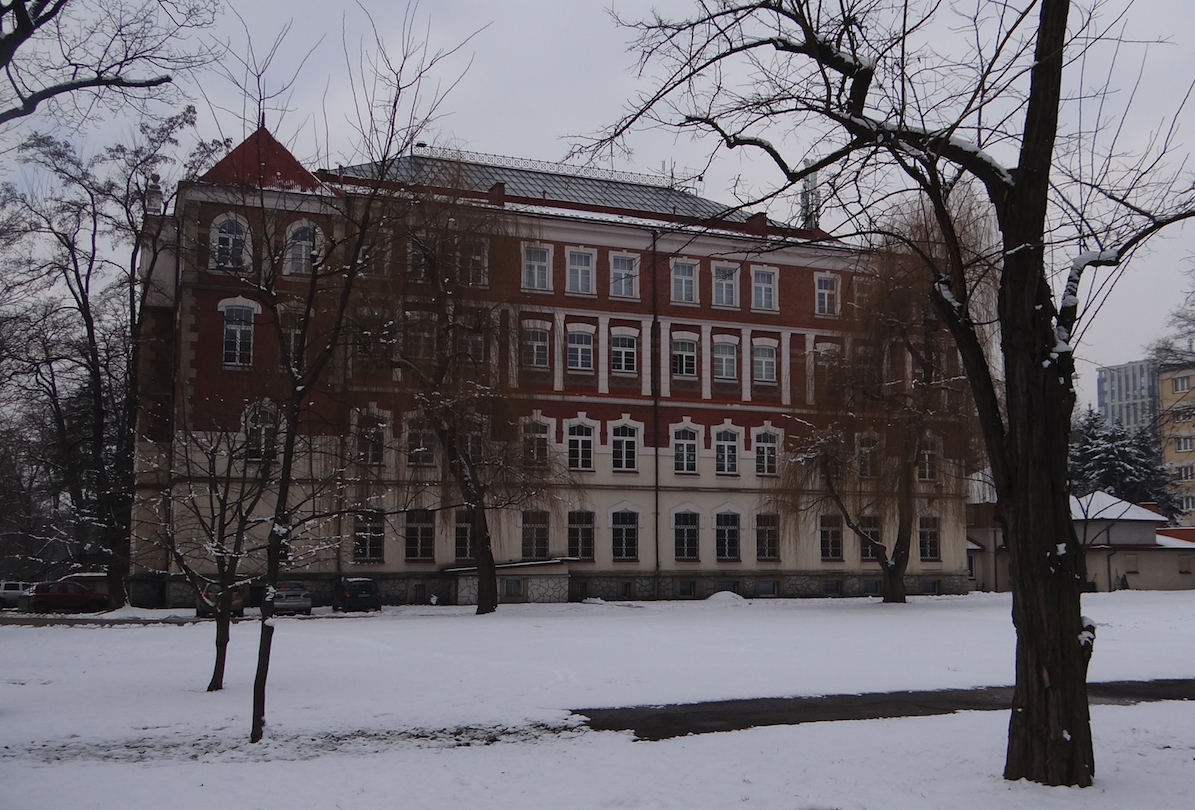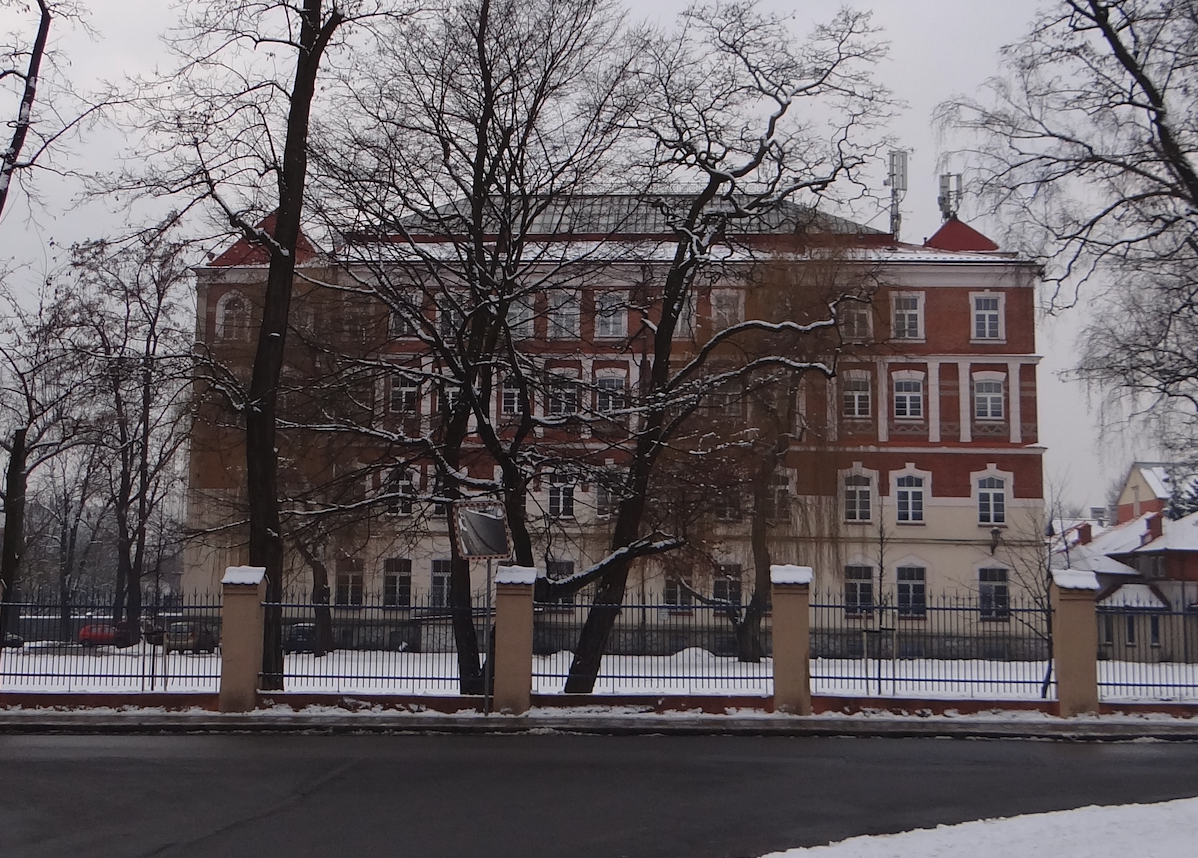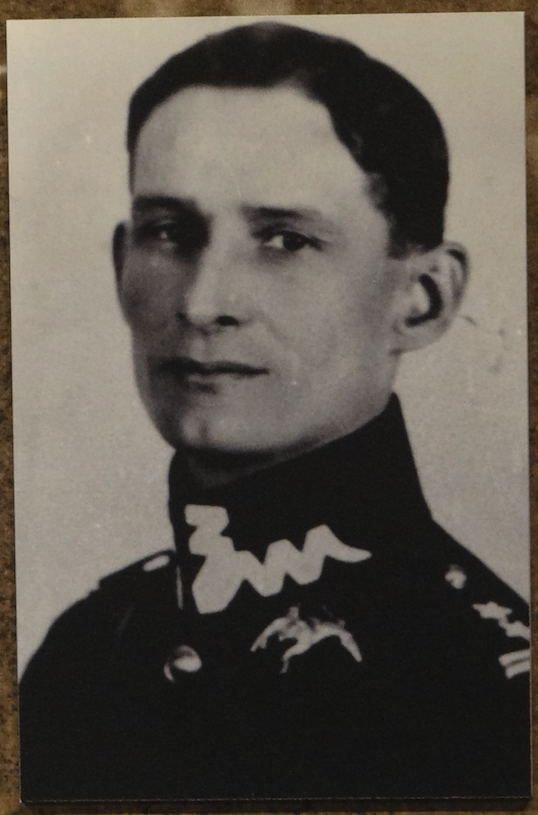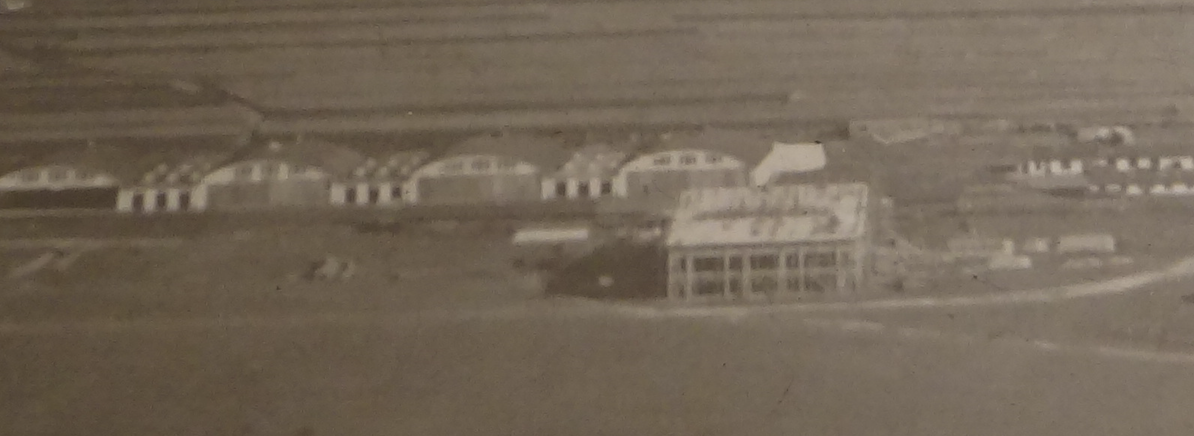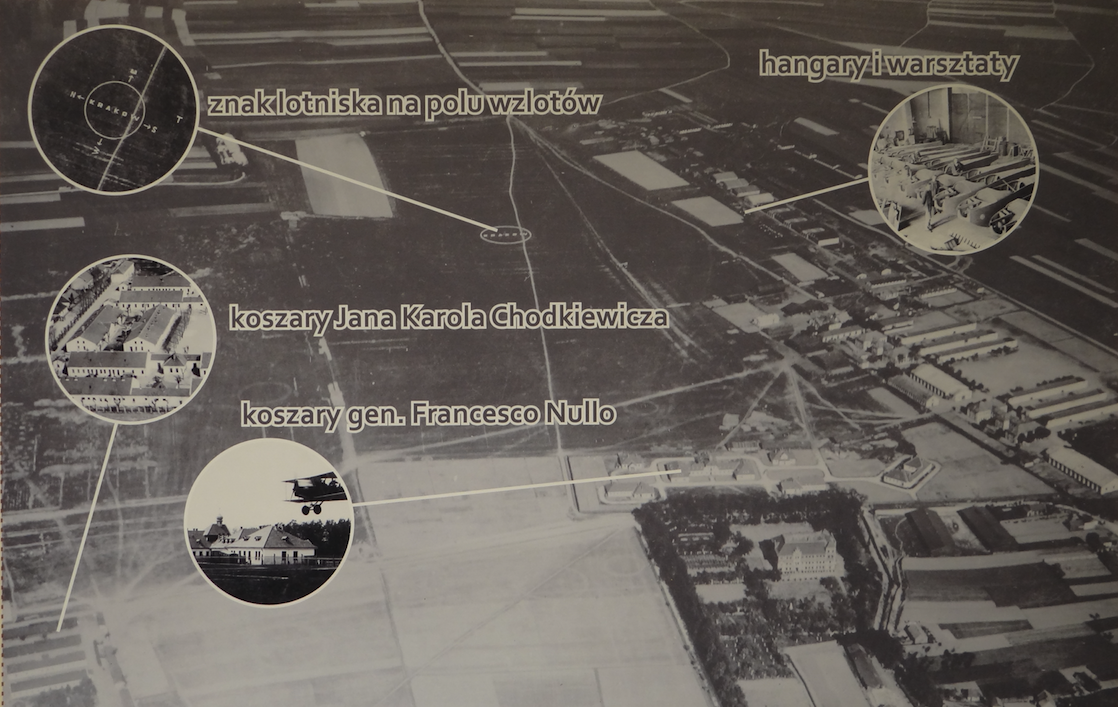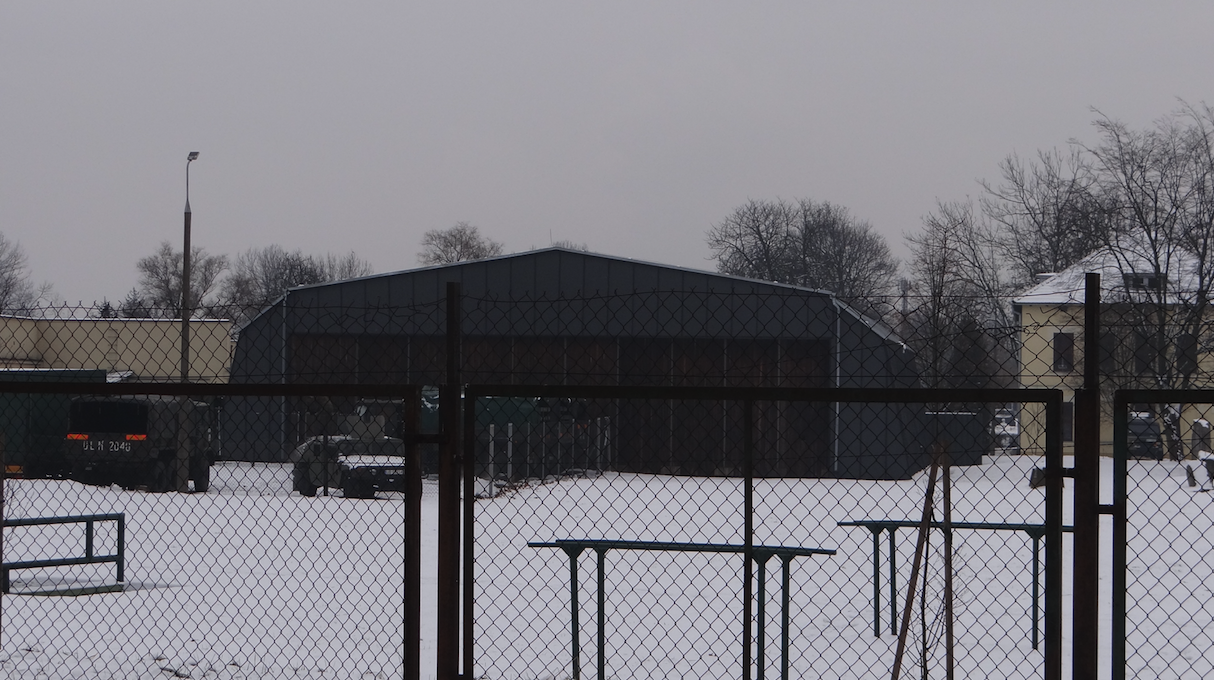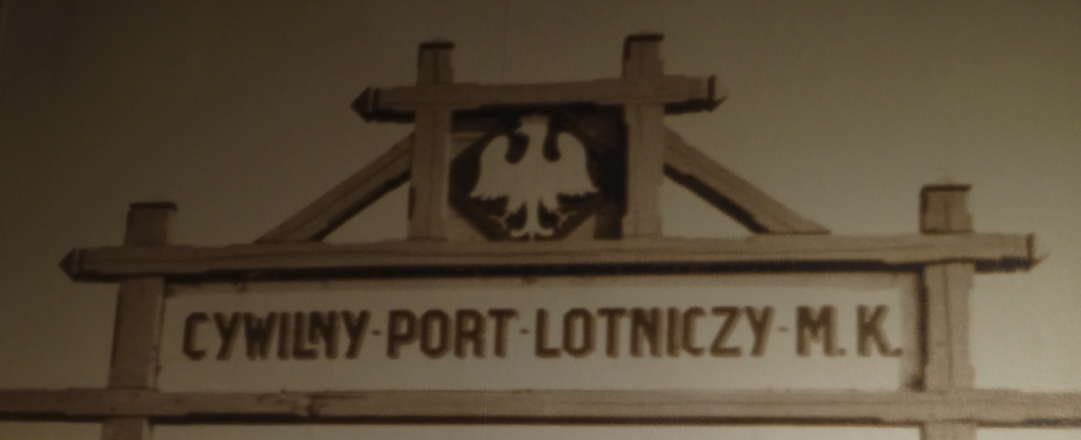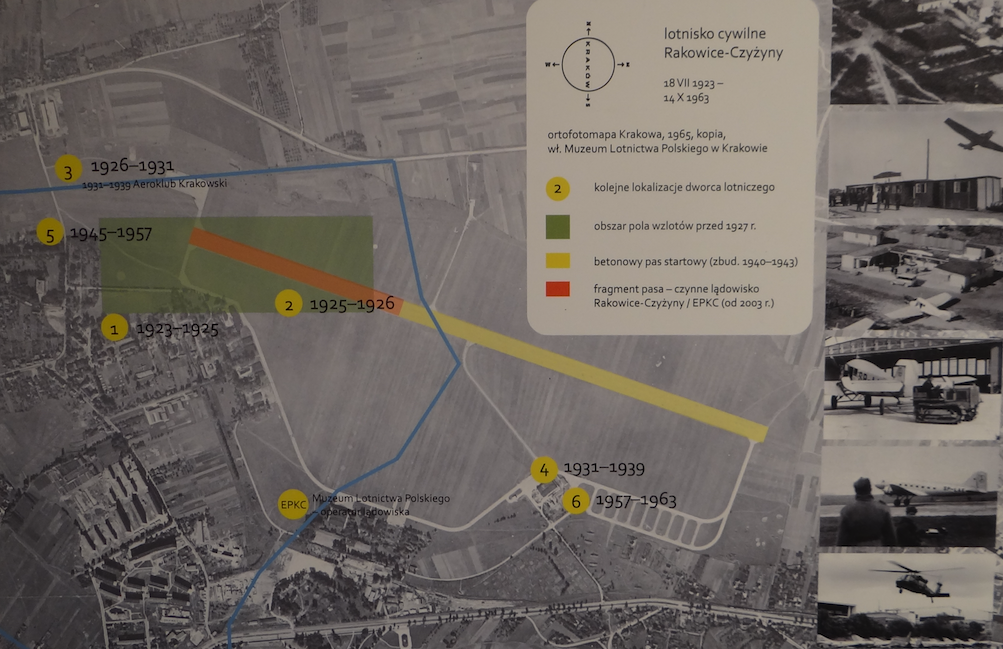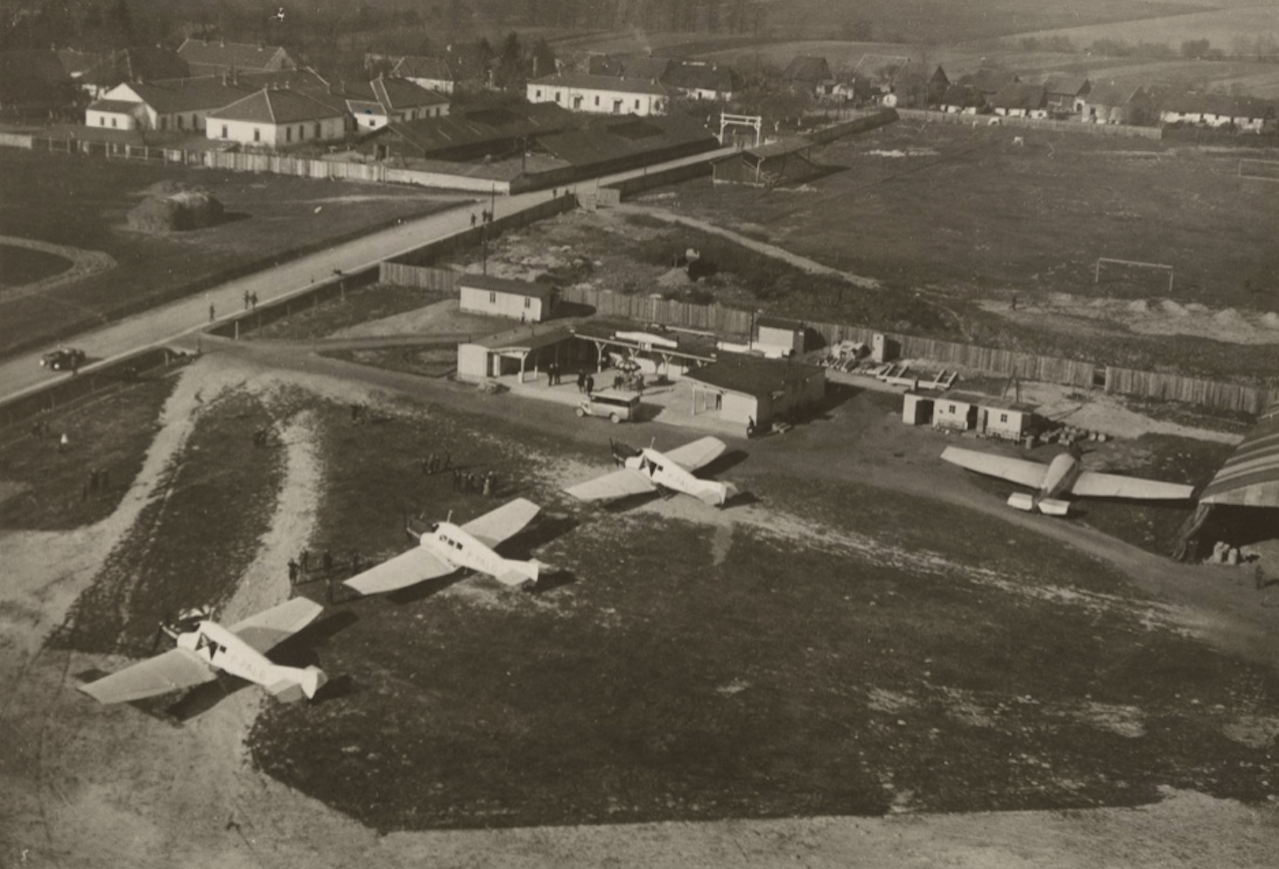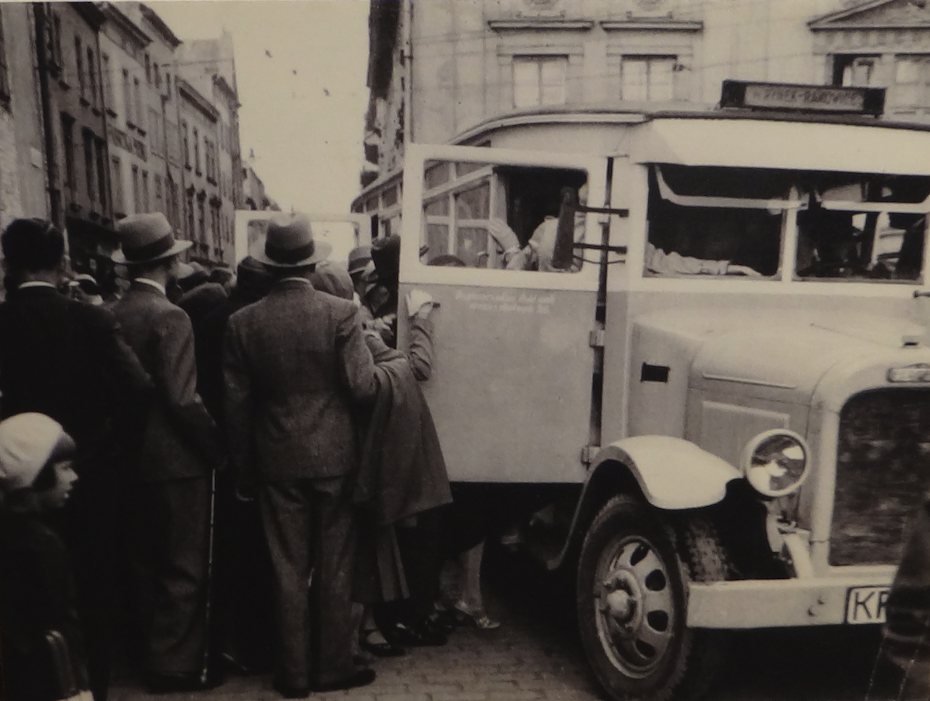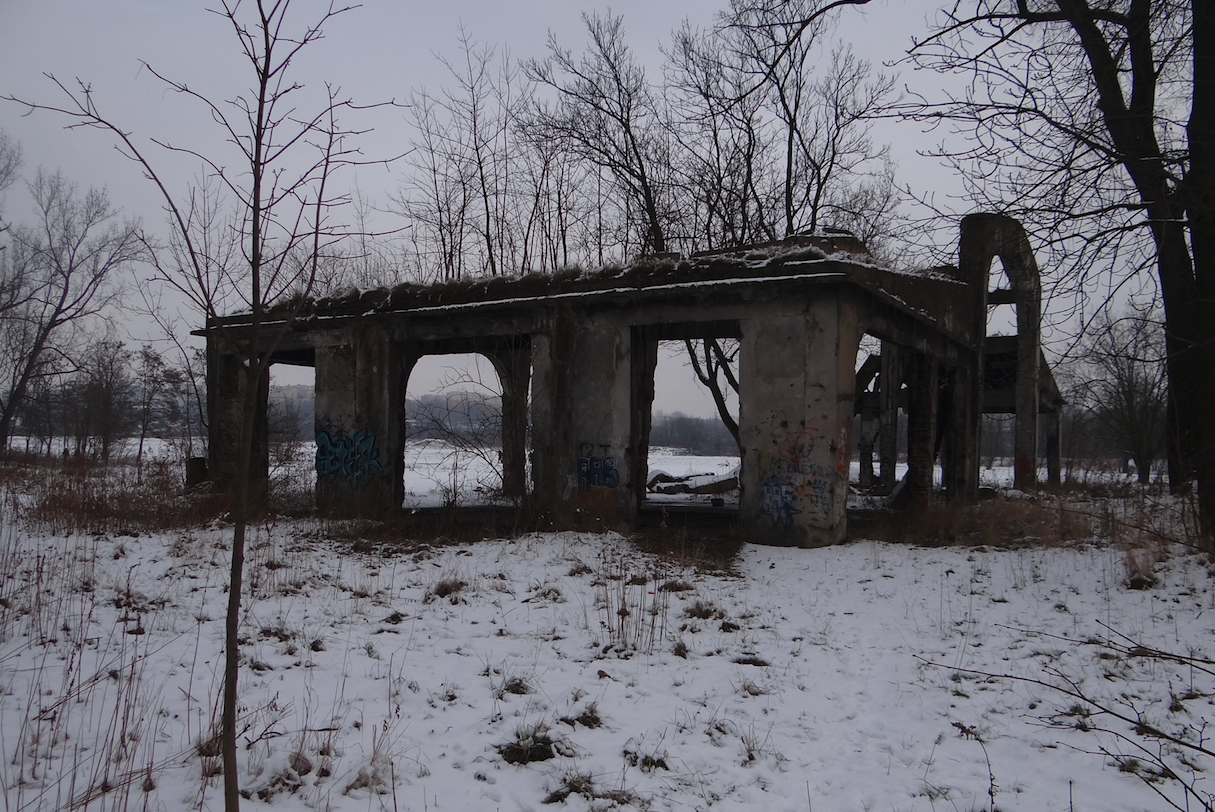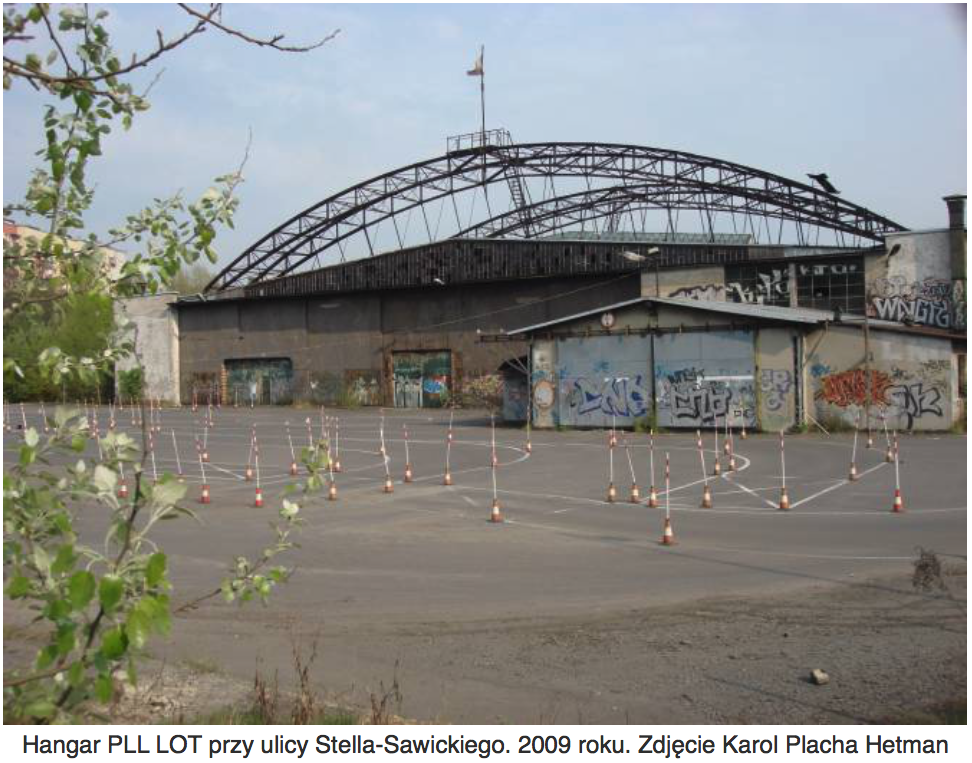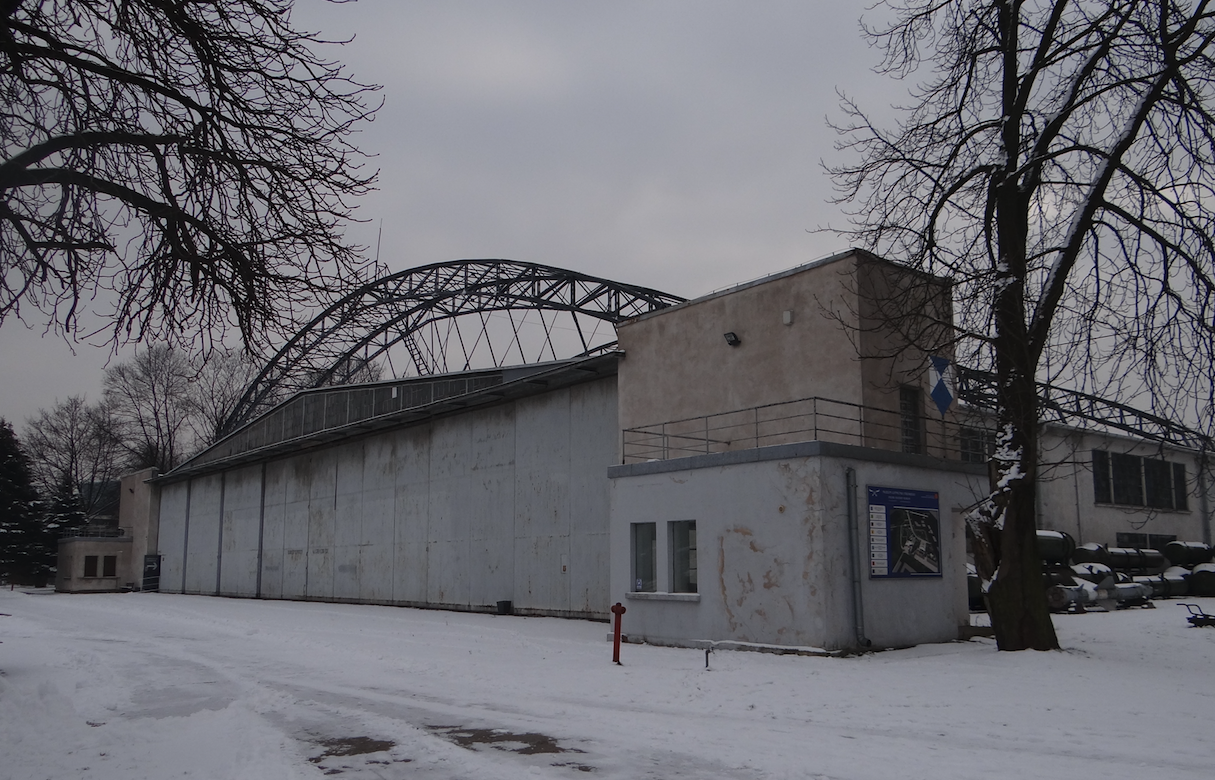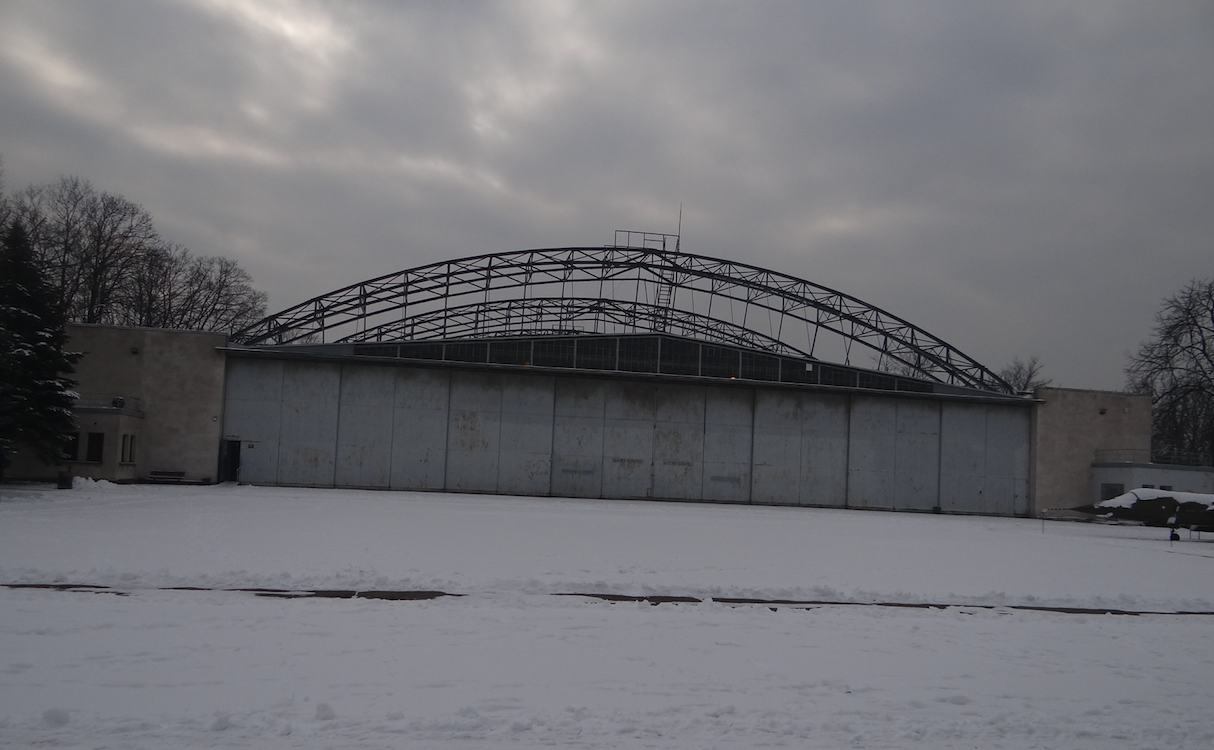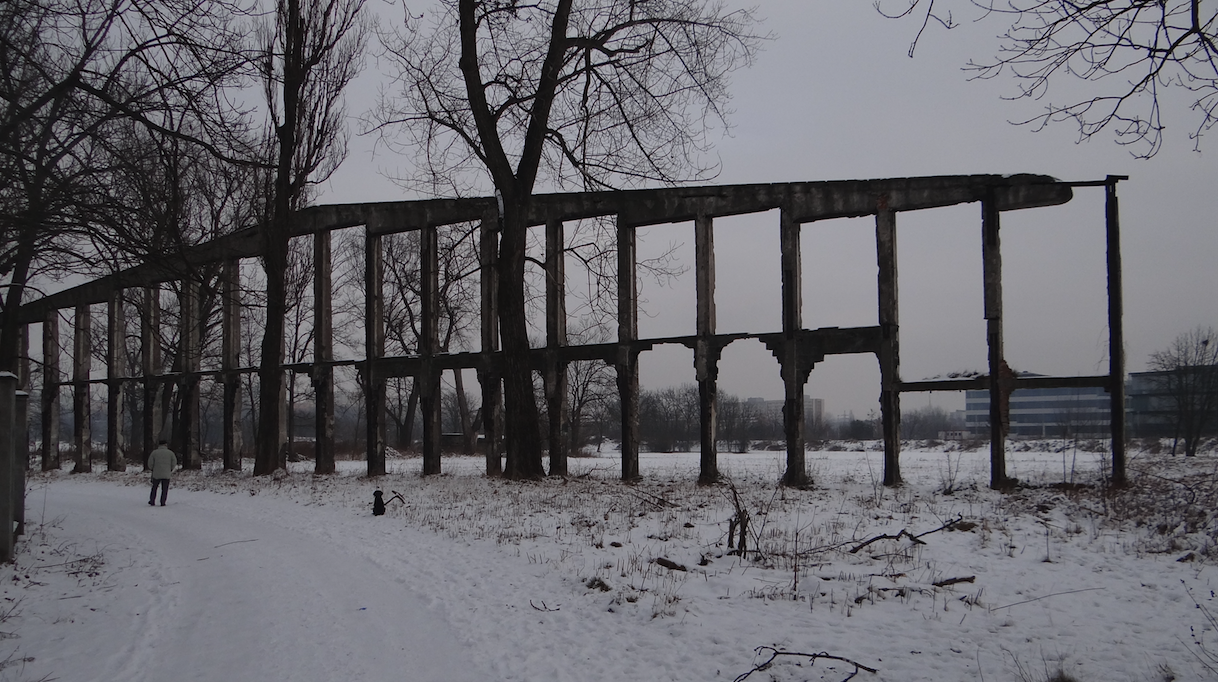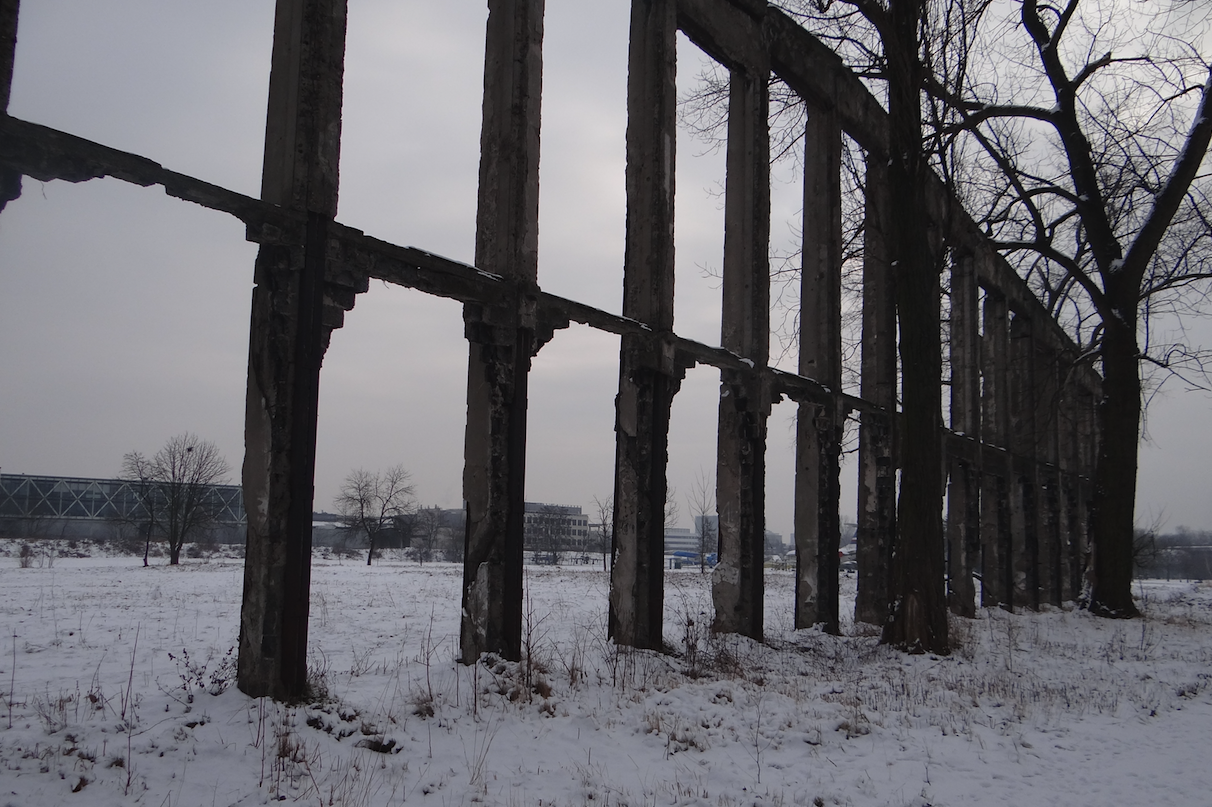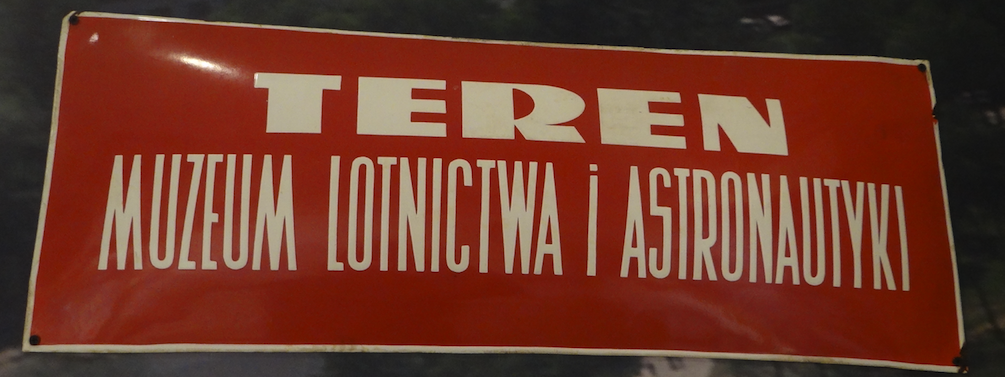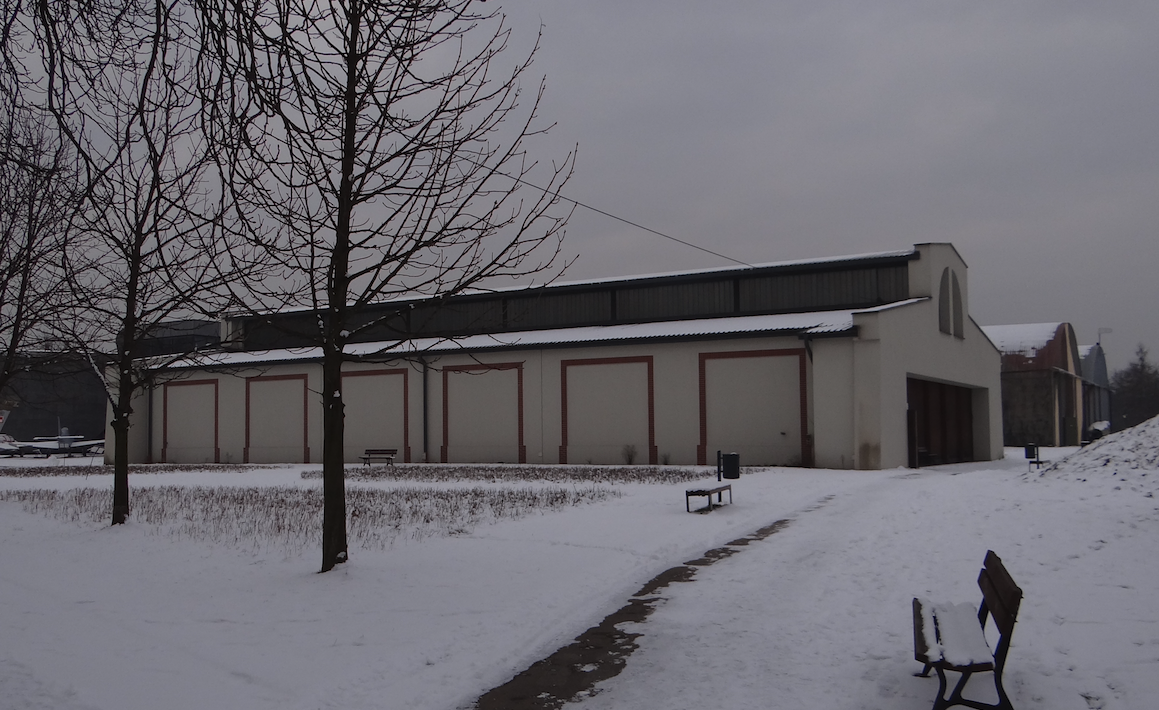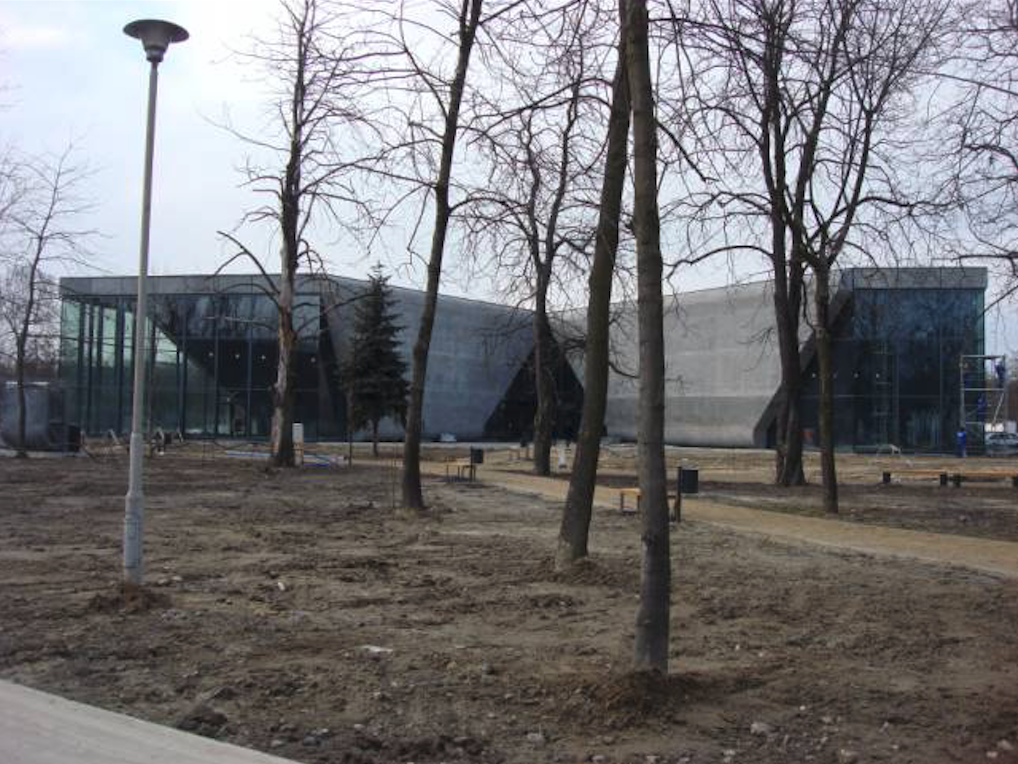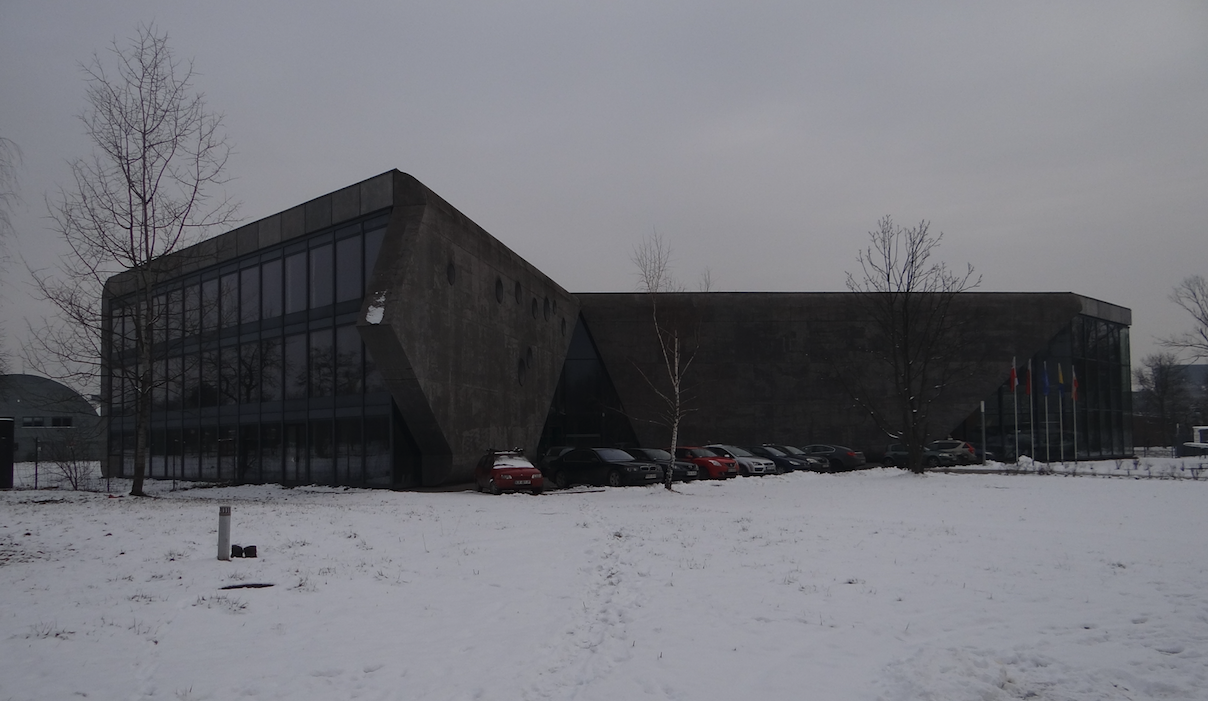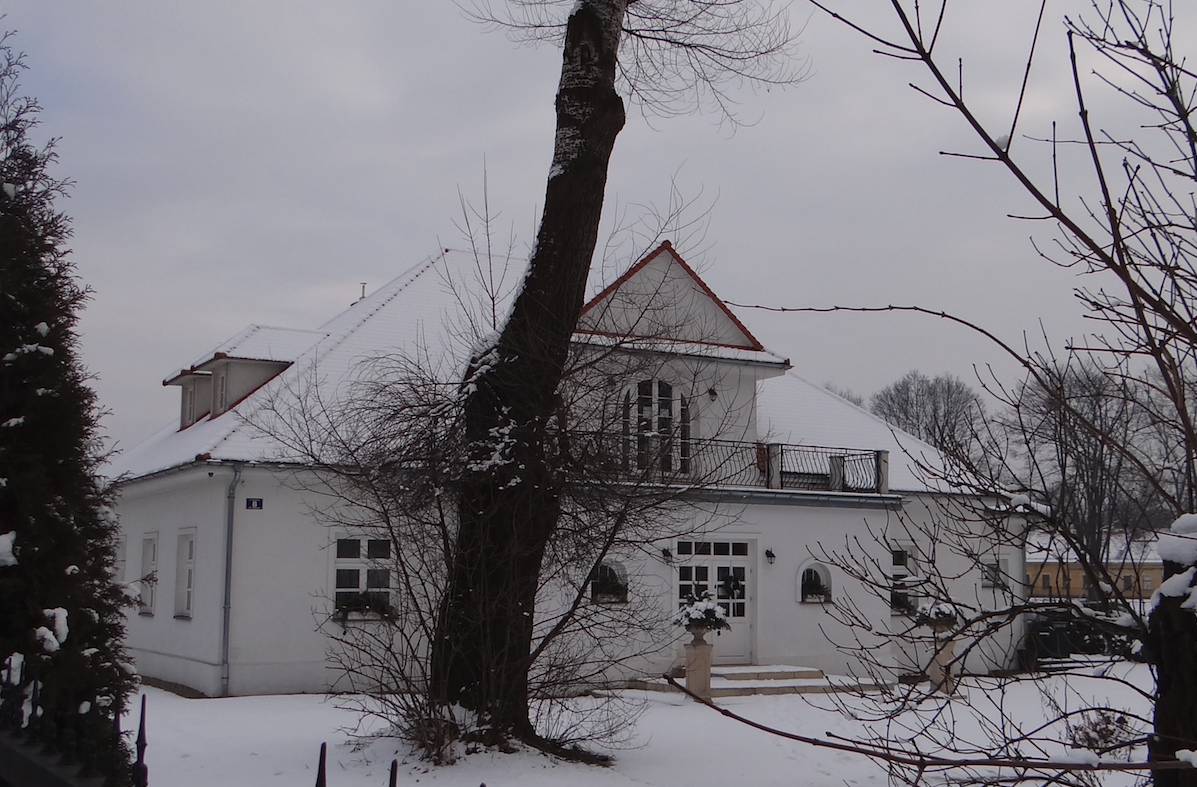Kraków 25.01.2018r.
Lotnisko Rakowice – Czyżyny
Historia
Część 2
W Części 1 zamieszczono stosunkowo małą ilość informacji o historii Lotniska Rakowice-Czyżyny w okresie 1918-1939. Dlatego w tym artykule przedstawimy więcej faktów z tego okresu.
Rakowice to dawna miejscowość (wieś) lokowana na prawie Zachodnim. Sąsiadka Czyżyn, Olszy, Prądnika Czerwonego i Mistrzejowic. Pierwsza wzmianka na jej temat pochodzi z 1244 roku.
Dokument z 1244 roku, Biskupa Jana Prandoty, który wymienia wieś Rakowice. 2018 rok. Zdjęcie Karol Placha Hetman – Muzeum Historyczne.
Do trzeciego rozbioru Rzeczypospolitej (1795 rok) Rakowice były wsią królewską, zarządzana przez wielkorządców. Opiekę duszpasterską sprawowali kapłani z kościoła Św. Mikołaja (obecnie przy ulicy Kopernika) w Krakowie. W XV wieku na obszarze Rakowic założono folwark, zbudowano dwór i młyn. Majątek ucierpiał w czasie potopu szwedzkiego. Potem był odbudowany i kilkakrotnie przebudowywany. W XVIII wieku Rakowice liczyły zaledwie 25 domów i 150 mieszkańców, a z początkiem XX wieku 40 zagród. Na łąkach rakowickich mieszczanie mieli królewski przywilej wypasania bydła i owiec. Część terenów Rakowic, od strony Prądnika Czerwonego tradycyjnie był wykorzystywany na wojskowe place ćwiczeń, czyli austriackie Exerciseplätze. Z końcem XIX wieku założono tu pierwsze sady i ogrody warzywno-kwiatowe na handel. W 1874 roku właścicielem folwarku w Rakowicach został Antoni Zazmanita, który na jego terenie wybudował fabrykę cykorii.
Wieś Rakowice na tle współczenego planu Krakowa. 2018 rok. Zdjęcie Karol Placha Hetman – Muzeum Historyczne.
W 1856 roku w wyniku fortyfikowania Krakowa, na pograniczu Rakowic i Czyżyn (przy obecnej ulicy Markowskiego, wjazd do Muzeum Lotnictwa Polskiego) zbudowano Fort Nr 15 „Pszorna”. Zbudowanie fortu spowodowało zahamowanie żywiołowego rozwój budownictwa w kierunku północno-wschodnim, bo było to tak zwane przedpole fortu.
W 1920 roku Rakowiczanie zakupili od hrabiego Antoniego Potockiego parcelę przy ul. Głównej (obecnej ul. Pilotów) pod budowę Szkoły Powszechnej, którą otwarto w 1924 roku. W okresie międzywojennym na terenie Rakowic zaczęła rozwijać się zabudowa willowa. W czasie okupacji germańskiej, w 1941 roku Rakowice włączono do Miasta Krakowa. W 1948 roku erygowano parafię w Rakowicach.
Wojsko
W 1880 roku w rejonie dzisiejszej ulicy Ułanów i Akacjowej, założono austriackiej koszary kawalerii. Stacjonował tu szwadrony 1. Galicyjskiego Pułku Ułanów gen. Rudolfa von Brudermanna, a w okresie międzywojennym 8. Pułk Ułanów im. Księcia Józefa Poniatowskiego. Warto wiedzieć, że na Prądniku Czerwonym były także kolejne koszary – Jana Karola Chodkiewicza.
Na pierwszym planie piękny budynek Ojców Pijarów. Powyżej plac ćwiczeń ułanów. Na samej górze koszary Jana Karola Chodkiewicza na Prądniku Czerwonym. Zdjęcie z 1919 roku. Własność Muzeum Lotnictwa Polskiego. 2018 rok. Zdjęcie Karol Placha Hetman – Muzeum Historyczne.
Dla nowych koszar zaprojektowano i zbudowano sieć bitych dróg kołowych i kolejowych.
Przypuszczalnie w 1892 roku przy koszarach kawalerii umieszczono oddział balonów obserwacyjnych. Oddział wchodził w skład 2. Regimentu Artylerii Fortecznej hrabiego von Beschi. Pole wzlotu balonów zlokalizowano po północnej stronie koszar. W koszarach zamontowano aparaturę do produkowania wodoru, systemem Parseval-Sigsfeld, firmy Semperit, przeznaczonego do napełniania balonów.
Polski 8. Pułk Ułanów.
Polski 8. Pułk Ułanów. Za początki 8 Pułk Ułanów przyjmuje się datę wystawienia 1 Dywizjonu Ułanów przez 21-letniego wówczas majora wojsk austriackich, księcia Józefa Poniatowskiego we Lwowie w dniu 1 listopada 1784 roku. Został on wyznaczony dowódcą dywizjonu pułku ułanów, który miał zorganizować z ochotników, przeważnie z Polaków. Ułani i podoficerowie przez cały XIX wiek rekrutowani byli z terenów Małopolski (Galicji), natomiast w pułku nie było Polskich oficerów. Sytuacja zmieniła się z końcem XIX wieku, kiedy oficerami zostawali także Polacy. W tym czasie pułk ułanów stacjonował w kilku miejscach na terenie Małopolski. W okresie wielkiej wojny światowej powstawały już oddziały ułanów złożone wyłącznie z Polskich żołnierzy. Pomocy udzielali Polscy ziemianie, którzy finansowali częściowe utrzymywanie tych oddziałów. Ofiarowywali głównie pieniądze i konie. Za czasów panowania cesarza Franciszka Józefa I pułk nosił nazwę 1 Pułku Ułanów Austriackich (1 Galicyjskiego Pułku Ułanów), po przejściu pod dowództwo Niepodległego Państwa Polskiego w 1918 roku, nosił krótko nazwę 1 Pułku Ułanów Ziemi Krakowskiej (26.10.1918r.-14.01.1919r.).
- Pułk Ułanów stacjonował w Rakowicach do marca 1939 roku, kiedy to w obliczu możliwości ataku zarazy germańskiej na Rzeczypospolitą został przebazowany do Koberzyna (na południowy-zachód od Krakowa), a dokładnie w rejonie skrzyżowania ulic Zawiłej i Kobierzyńskiej.
Po drugiej wojnie światowej, w 1945 roku, koszary przy ulicy Ułanów zostały zajęte przez 10. PLM (Pułk Lotnictwa Myśliwskiego), szybko przemianowany na 2. PLM oraz 7. Dywizja Lotnictwa Myśliwskiego (1951-1957). Pułk stacjonował tutaj do 1967 roku, chociaż jego rozformowywanie rozpoczęto już w 1963 roku. W koszarach zadomowił się jeden z pododdziałów 6 Pomorskiej Dywizji Powietrzno Desantowej, który był formowany od 1957 roku.
Od 1999 roku w koszarach przy ul. Ułanów stacjonuje 6. Batalion Dowodzenia im. gen. broni Józefa Kuropieski, wchodzący w skład 6. Brygady Powietrzno-Desantowej im. gen. Stanisława F. Sosabowskiego.
Koszary ułanów, a powyżej koszary lotnicze generała Francesco Nullo. Dużo obiektów przetrwało do chwili obecnej. Zdjęcie z około 1922 roku. 2018 rok. Zdjęcie Karol Placha Hetman – Muzeum Historyczne.
Koszary ułanów. Ulica Akacjowa. 2018 rok. Zdjęcie Karol Placha Hetman
Koszary ułanów. Ulica Akacjowa. 2018 rok. Zdjęcie Karol Placha Hetman
Koszary ułanów. Ulica Ułanów. 2018 rok. Zdjęcie Karol Placha Hetman
Koszary ułanów. Ulica Ułanów. 2018 rok. Zdjęcie Karol Placha Hetman
Koszary ułanów. Ulica Spadochroniarzy. 2018 rok. Zdjęcie Karol Placha Hetman
Koszary ułanów. Dawne stajnie. Ulica Spadochroniarzy. 2018 rok. Zdjęcie Karol Placha Hetman
Ojcowie Pijarzy
Zakon Ojców Pijarów w Krakowie mieści się przy ulicy Pijarskiej w centrum Krakowa. W 1910 roku Honorata Jachimska, córka Antoniego Zazmanity, sprzedała rakowicki majątek Zakonowi Ojców Pijarów, którzy w miejscu dawnej fabryki cykorii wybudowali kaplicę (obecna ulica Mirosława Dzielskiego). W kaplicy odprawiano Msze Święte dla okolicznych mieszkańców. Obecnie tutaj jest Kościół pod wezwaniem Najświętszego Imienia Maryi. W 1913 roku Ojcowie Pijarzy otwarli w Rakowicach Zakład Naukowo-Wychowawczy dla Chłopców (przy obecnej ul. Akacjowej i Mirosława Dzielskiego), w okazałym gmachu. Zakład o nazwie Gimnazjum Rozwojowe im. Księdza Stanisława Konarskiego, Ojcowie Pijarzy prowadzili w centrum Krakowa od 1909 roku, przy obecnej ulicy Pijarskiej. Jednak obiekty były za małe, dlatego zakupiono majątek w Rakowicach.
We wrześniu 1914 roku, w czasie wielkiej wojny światowej wojsko austriackie zarekwirowało okazały budynek Ojców Pijarów i urządzili w nim szpital (lazaret).
Po odzyskaniu przez Polskę niepodległości Ojcowie Pijarzy odzyskali okazały budynek i teren na którym stał.
Z chwilą agresji germańców na Polskę okazały budynek Ojców Pijarów stał się siedzibą dowództwa Luftwaffe. Germańcy poprowadzili z Lotniska nową, bitą drogę prosto do budynku, na jego wschodnią fasadę, która nie jest ścianą frontową budynku. Droga to dzisiejsza ulica Ernesta Cieślewskiego. Aby poprowadzić nową ulicę germańcy rozebrali budynek koszar lotniczych.
W styczniu 1945 roku germańcy podpalili budynek szkoły Ojców Pijarów. Po odbudowie budynku przez zakon, został on w 1951 roku przejęty przez sowieckie wojsko, które w krótkim czasie, z powodu zmiany stacjonowania, obiekt przekazało Wojsku Polskiemu. Ojcowie Pijarzy odzyskali obiekty dopiero w 1990 roku, po przemianach społeczno-gospodarczych. W budynku urządzono Liceum Pijarskie. Piękny budynek Ojców Pijarów jest istną perłą Rakowic.
Budynek Ojców Pijarów. 2018 rok. Zdjęcie Karol Placha Hetman
Budynek Ojców Pijarów. 2018 rok. Zdjęcie Karol Placha Hetman
Budynek Ojców Pijarów. 2018 rok. Zdjęcie Karol Placha Hetman
Lotnisko
Początkiem lotniska były decyzje dowódców austriackich, o utworzeniu Oddziałów Lotniczych przy istniejących już Oddziałach Aeronautycznych (balonowych). W Krakowie zaplanowano budowę Flugparku Nr 7 (parku lotniczego). W 1912 roku władze austriackie wykupiły część gruntów od Ojców Pijarów z przeznaczeniem na flug-park, lotnisko. Był to teren na południowy-wschód od koszar. Początkowo lotnisko miało tylko wytyczone pole wzlotów, port techniczny i zaplecze socjalne. Już pierwsze doświadczenia wielkiej wojny światowej spowodowały dynamiczny rozwój lotnictwa. Nie tylko zmieniały się same aeroplany, ale zwiększała się ilość personelu naziemnego, niezbędnego sprzętu i stosownej ilości koni.
Pierwsze hangary zwane wówczas remizami zbudowano wzdłuż północnej strony jednostki ułanów. Zbudowano trzy jednakowe hangary, o konstrukcji drewnianej z dwuspadowym dachem, z załamanymi brzegami i skośnymi ścianami. Ich wrota drewniane przesuwano na metalowych kołach. Dach i i ściany kryte papą. Zajmowały powierzchnię około 25 m x 25 m. Ogólnie bardziej przypominały stodoły. Do chwili obecnej (2018 rok) zachował się jeden z tych hangarów, ten od strony wschodniej.
W 1915 roku ruszyła rozbudowa Lotniska Rakowice. W okresie 1916-1917 wzniesiono zespół koszar lotniczych (przy obecnej ul. Akacjowej i Ernesta Cieślewskiego) według projektu Karla Theisza przy współudziale Tadeusza Stryjewskiego i Franciszka Mączyńskiego, w którym wykorzystano przedwojenną koncepcję „Ogrodu dla lotników” Paula i Andre Very. Paul Vera (1882–1957) był francuskim malarzem, projektantem i pionierem stylu Art Deco. Pracował on z bratem Andre, projektantem ogrodów. Braciom chodziło o to, żeby przedmioty użytkowe były jednocześnie piękne i aby człowiek czuł się wśród nich dobrze. „Ogród dla lotników” w Rakowicach nigdy nie został zrealizowany do końca.
Na Lotnisku Rakowice bardzo rozbudowano zaplecze techniczne w postaci warsztatów, magazynów, stacji paliw i smarów. Znajdowały się one w miejscu późniejszych dużych hangarów i obecnych garaży samochodowych okolicznych mieszkańców. Z końcem wielkiej wojny światowej zaplecze techniczne, tak zwana Stacja Lotnicza była bardzo duża. Na jej terenie były cztery murowane hale z łukowatymi dachami połączone budynkami socjalnymi i magazynowymi. Były także inne murowane i drewniane budynki. Do chwili obecnej żaden z tych obiektów nie zachował się. Stacja Lotnicza to rodzaj parku samolotowego w którym wykonuje się remonty, naprawy, przeglądy płatowców i silników lotniczych. Cały teren Stacji Lotniczej jest ogrodzony. Ma bramę wjazdową „od strony miasta” oraz bardzo szeroką bramę wiodąca na pole wzlotów, przez którą są kołowane samoloty.
W grudniu 1914 roku Oddział Lotniczy posiadał sześć aeroplanów, a wśród nich: Albatros, Aviatik, Lohner, DFW. Wykonywały one loty zwiadowcze. W ich wyniku udało się Austriakom powstrzymać rusków w trakcie operacji Limanowsko-Łapanowskiej i nie dopuścić do ataku na Kraków.
Odrzucenie frontu daleko na wschód, spowodowało zmianę znaczenia Lotniska Rakowice. Z lotniska przyfrontowego stało się lotniskiem głębokiego zaplecza i bardzo ważnym ośrodkiem szkoleniowym, remontowym oraz węzłem transportowym. Od 1916 roku działała czasowa, a następnie regularna linia poczty lotniczej na trasie Wiedeń-Kraków-Lwów-Kijów.
W 1917 roku pole wzlotów ma już wymiary 500 m x 800 m.
W dniu 31 października 1918 roku dowódca stacjonującej w Rakowicach 10. Zapasowej Kompanii Lotniczej kpt. Roman Florer przy pomocy Polskiego personelu opanował lotnisko, a następnie poddał je pod rozkazy komendanta Miasta Krakowa płk. Bolesława Roi.
Pułkownik Roman Florer. Zdjęcie LAC.
Część żołnierzy cesarsko-królewskiej armii nie chcieli się zgodzić z zaistniałą sytuacją. Próbowali nawet akcji sabotażowych w postaci podpalenia hangarów i uprowadzenia do Wiednia samolotów. Na szczęście zapobiegli temu żołnierze działu mechanicznego, na czele z sierżantem Jucha, którzy unieruchomili wszystkie samoloty. W tym czasie na lotnisku było około 20 aeroplanów.
W listopadzie 1918 roku na samolotach zamalowane czarne krzyże na białym tle. Początkowo cały kwadrat pomalowano na biało i wpisano weń czerwoną literę „Z”, która oznaczała Zwycięstwo. Jednak szybko zastąpiono je szachownicą. Początkowo bez obramowania.
W dniu 1 stycznia 1919 roku z samolotu Oeffag C.I na Miasto Kraków zrzucono ulotki z życzeniami szczęśliwego Nowego Roku w Wolnej Polsce.
Na terenie lotniska utworzono pierwszą Polską jednostkę bojową tak zwaną Eskadryla Lotnicza, przemianowaną później na 1. Eskadrę, a w 1921 roku na 2. Pułk Lotniczy. Na jego czele stanął pułkownik Ernest Ciesielski.
W czasie wojny polsko-bolszewickiej na Lotnisku Rakowice utworzono szkołę pilotów. Szkołę o nazwie 1. Niższa Szkoła Pilotów, która została powołana do życia rozkazem z dnia 11 maja 1919 roku. Na komendanta wyznaczono kpt. pilota Romana Florer. Pierwszymi instruktorami byli por. Augustyn Domes, sierż. Grimm, sierż. Józef Kohut, sierż. Kołodziejski, sierż. Śledziejowski. Program szkolenia oparto na regulaminach i instrukcjach austro-węgierskich. Były trzy etapy szkolenia, oznaczone A, B i C. Każdy etap był kończony egzaminem. Szkoleni zdobywali wiedzę z zakresu budowy płatowca i silnika, meteorologii, nawigacji, taktyki. Piloci musieli obowiązkowo przejść praktykę jako mechanicy, która trwała 2-3 tygodnie. Całe szkolenie zajmowało 3-4 miesiące. Zdolniejsi kończyli kurs w dwa miesiące. W Krakowie nie brakowało sprzętu, dlatego pod tym względem szkolenie było niezakłócone. Natomiast nie było samolotów bojowych, gdyż te wysłano na wschodni front. Dlatego planowano kursantów wysyłać na miesięczne przeszkolenie do Warszawy. Do tego jednak nie doszło, bo w połowie września 1919 roku, 2. Wyższą Szkołę Pilotów z Warszawy przeniesiono do Krakowa. Szkoły połączono i powstała Niższa Szkoła Pilotów. Komendantem całej Szkoły pozostał kpt. pilot Roman Florer. Szkoła miała dwie eskadry szkolne: dla kursu niższego z dowódcą por. pilot Augustyn Domes i dla kursu wyższego ppor. pilot Stanisław Jakubowski. Jej absolwentem był między innymi późniejszy pisarz Janusz Meissner. Po roku czasu, we wrześniu 1920 roku Szkołę przeniesiono do Bydgoszczy.
Około 1920 roku na Stacji Lotniczej wybuchł duży pożar, który spowodował znaczne straty materialne.
Fragment Stacji Lotniczej (hangary i warsztaty) na Lotnisku Rakowice. Zdjęcie z około 1924 roku. 2018 rok. Zdjęcie Karol Placha Hetman – Muzeum Historyczne.
Lotnisko Rakowice około 1922 roku. 2018 rok. Zdjęcie Karol Placha Hetman – Muzeum Historyczne.
Lotnisko Rakowice około 1924 roku. 2018 rok. Zdjęcie Karol Placha Hetman – Muzeum Historyczne.
Najstarszy zachowany hangar. Obecnie na terenie Jednostki Wojskowej. 2018 rok. Zdjęcie Karol Placha Hetman
Lotnictwo komunikacyjne
W dniu 18 lipca 1923 roku otwarto Cywilną Stację Lotniczą Kraków. Stację powołano dla wsparcia linii lotniczej Aerolloyd, która uruchomiała pierwsze stałe połączenie pasażersko-pocztowe na trasie Kraków-Warszawa. W tym to dniu, wylądował samolot Junkers F-13 z pierwszymi pasażerami z Warszawy. Założycielem i użytkownikiem Stacji Lotniczej Kraków było Ministerstwo Kolei Żelaznych. Warto dodać, że Aerolloyd w 1925 roku zmieniła nazwę na Aerolot, a w 1929 roku stała się częścią powstałego PLL LOT. W 1923 roku Aerolloyd przewiózł w Krakowie 75 pasażerów, a w 1924 roku już 660 osób.
Brama wjazdowa do portu lotniczego w Rakowicach. Zdjęcie z 1926 rok. 2018 rok. Zdjęcie Karol Placha Hetman – Muzeum Historyczne.
Lotnisko Rakowice około 1960 roku. W żółtych punktach kolejne miejsca lokalizacji portów lotniczych. 2018 rok. Zdjęcie Karol Placha Hetman – Muzeum Historyczne.
W 1924 roku Lotnisko Rakowice sięgało już po Błonia Czyżyńskie, które ostatecznie zakupiono dla lotniska w 1927 roku. Pole wzlotów było mniej więcej prostokątne o wymiarach 1 000 m x 350 m. Nawierzchnia była gruntowa. W centrum było duże białe koło z białym napisem KRAKÓW. Wykładano także białą literę „T”, wskazującą kierunek wiatru. Na dachu jednego z hangarów był także rękaw wskaźnikowy.
W okresie 1923-1932 dworzec lotniczy był niezwykle prosty. Składał się on z dwóch wagonów towarowych (bez kół), które ustawiono na zachodnim skraju pola wzlotów między koszarami ułanów a wojskowymi obiektami lotniskowymi. Rozbudowa dworca lotniczego polegała na dostawianiu kolejnych wagonów. Chwilowo dworzec przeniesiono na wschód pola wzlotów, ale szybko powrócono na zachód i ustawiono poza polem wzlotów na terenie Prądnika Czerwonego w pobliżu koszar piechoty. Tutaj wagony ustawiono w kształcie litery „U”. Dodano dach i drewniane arkady, przez co obiekt zyskał na urodzie. W pobliżu postawiono obiekty pomocnicze w tym dwa lekkie hangary prawdopodobnie typu Bossoneaux. Nieco później dostawiono hangary typu namiot. W obiektach było mieszkanie dla radiotelegrafisty i radiostacja, także umieszczona w wagonie.
Port Lotniczy Rakowice. Na płycie postojowej samoloty Junkers F-13. Zdjęcie z około 1928 roku. 2018 rok. Zdjęcie Karol Placha Hetman – Muzeum Historyczne.
Autobus na Małym Rynku w Krakowie zabiera pasażerów także na Lotnisko Rakowice. Na tablicy na autobusie "M. Rynek – Rakowice". Zdjęcie z 1933 roku. 2018 rok. Zdjęcie Karol Placha Hetman – Muzeum Historyczne.
W 1927 roku pole wzlotów powiększono w kierunku południowo-wschodnim. Zwiększyło się wówczas od 55 hektarów do 150 hektarów. W 1931 roku Port Lotniczy przeniesiono z Prądnika Czerwonego do Czyżyn. Pozostawione obiekty przekazano Aeroklubowi Krakowskiemu.
Głównym obiektem był nowoczesny hangar przy obecnej ulicy Stelii-Sawickiego. Jest o nim mowa poniżej. Całkowity koszt nowego obiektu dla PLL LOT wyniósł 1 300 000 złotych. W przybudówkach i wolno stojących budynkach umieszczono dyrekcję PLL LOT, stację meteorologiczną, dom pilota, poczekalnię, stacje transformatorową, stację benzynową, kotłownię centralnego ogrzewania, warsztat, magazyn. Port posiadał własną radiostację nadawczo-odbiorczą. Do dworca doprowadzono asfaltowa szosę, a także od dworca kolejowego Czyżyny doprowadzono bocznicę kolejową. Pasażerów przewożono także do centrum Krakowa autobusem firmowym PLL LOT. Kurs kończył się na Małym Rynku w Krakowie.
W 1934 roku pole wzlotów otrzymało goniometr (radionamiernik) dla ułatwienia nawigacji. W 1937 roku pole wzlotów oznaczono elektrycznymi latarniami granicznymi oraz zamontowano światła ostrzegawcze wyższych obiektów Lotniska. Lotnisko nie obsługiwało samolotów cywilnych w nocy. Natomiast Wojsko Polskie podczas nocnych lotów, uruchamiało reflektory.
Godziny pracy portu były dostosowane do rozkładu lotów.
Komunikację lotniczą zapewniały samoloty Junkers F-13, Fokker F-VII/1m, Fokker F-VII/3m, Douglas DC-2, Lockheed 10 A Electra, Lockheed 14 Super Electra, PWS-24. W 1938 roku PLL LOT w Krakowie obsłużyło 2 368 pasażerów.
Rozwój Lotniska Rakowice-Czyżyny.
W połowie 20-lat XX wieku był doskonały model hangaru dwunawowego projektu profesora Politechniki Lwowskiej Tadeusza Obmińskiego. Tadeusz Obmiński był utalentowanym i wszechstronnym architektem i projektantem. Lista jego zrealizowanych projektów jest bardzo długa: kościoły, budynki użyteczności publicznej, całe osiedla. Budynki Lotniska w Skniłowie są jego dziełem. Zaprojektowany hangar był bardzo dobry, ale kosztowny i czasochłonny w wykonaniu. Jeden tego typu hangar na Lotnisku Rakowice zbudowano. Hangar zlokalizowano na wschodnim skraju jednostki kawalerzystów, wprost na przedłużeniu głównej ulicy jednostki. Budowę hangaru rozpoczęto w 1926 roku, a oddano do użytku w 1929 roku. Hangar ma dwie bliźniacze hale, a na bocznych ścianach umieszczone dodatkowe budynki. Szkielet jednego z tych bocznych budynków zachował się do chwili obecnej (2018 rok). Szkielet hangaru jest żelbetonowy. Konstrukcja dachu oparta na żelbetonowych łukach. Wrota metalowe.
Pozostałości hangaru dwunawowego projektu profesora Politechniki Lwowskiej Tadeusza Obmińskiego. Przybudówka od strony hangaru Nr.6. 2018 rok. Zdjęcie Karol Placha Hetman
W 1927 roku powstały kolejne plany rozbudowy Lotniska Rakowice-Czyżyny. Ich osnową było kilka wielkich hangarów. Ostatecznie zbudowano ich sześć (plus wspomniany podwójny hangar), choć planowano postawienie dwunastu. Umieszczono je po linii łuku, wokół pola wzlotów. Wówczas Lotnisko Rakowice-Czyżyny miało mieć pole wzlotów w formie koła, zgodnie z francuskimi koncepcjami.
Projektantami byli profesor Izydor Stella-Sawicki (rektor Politechniki Krakowskiej) i inżynier Koziołek. Hangary były zaprojektowane na bazie kwadratu o wymiarach 60 m x 60 m. Ma powierzchnie 3 600 metrów kwadratowych, a kubatura wynosi 28 000 metrów sześciennych. Ściany w postaci słupów żelbetonowych wypełniono ceglanym murem lub betonowymi bloczkami z otworami okiennymi. Dach to lekka konstrukcja podwieszona na trzech (wersja mniejsza dwóch) przestrzennych dźwigarach umieszczonych nad hangarem. Dach jest dwuspadowy, wykonany z płyt gazobetonowych krytych podwójną warstwa bitumiczną. Częściowo przeszkolony tak zwanymi świetlikami. Front to 8-skrzydłowe przesuwane metalowe drzwi.
Według tego projektu powstało sześć hangarów. Najdalej na wschód postawiono hangar dla PLL LOT. Lokalizacja tego hangaru wynikła w niewielkiej odległości od stacji kolejowej, co ułatwiało pasażerom dotarcie do stacji lotniczej PLL LOT. Hangar te istnieje do chwili obecnej. Przez wiele lat mieściła się tutaj zajezdnia autobusowa MPK-Kraków. W 90-latach XX wieku władze Krakowa zobowiązały MPK do oddania obiektów. Proces likwidacji rozpoczęto w 1997 roku, a w marcu 1998 roku teren zajezdni opuściły ostatnie autobusy. Wbrew pierwotnym planom zabytkowego hangaru nikt nie przejął. Jedynie w 2001 roku poprawiono wreszcie zgodnie z projektem odcinek ulicy Stella-Sawickiego prowadząc go przez część placu zajezdni i dawanej stacji paliw. W 2007 roku do hangaru wstawiono zabytkowe tramwaje, wcześniej stojące w hali przy ulicy Wawrzyńca. Jednak oglądać ich nie można. Teren do dnia dzisiejszego (2018 rok) jeszcze stoi pusty. Rewitalizację rozpoczęto w 2017 roku. Planuje się tutaj otwarcie muzeum techniki.
Kolejne dwa hangary postawiono w miejscu dzisiejszego Muzeum Lotnictwa Polskiego. Hangar po stronie wschodniej, w 70-latach XX wieku został wyburzony pod rozbudowującą się Politechnikę Krakowską. Ten od strony zachodniej istnieje do dnia dzisiejszego. Mieści się w nim ekspozycja muzeum. We wrześniu 1939 roku oba hangary zostały poważnie uszkodzone w wyniku bombardowania. Germańcy hangar po stronie zachodniej odbudowali, ale w dniu 18 stycznia 1945 roku ponownie wysadzili. W 1947 roku został ponownie odbudowany. Tym razem strop wykonano z drewna.
Hangar Nr 3. 2018 rok. Zdjęcie Karol Placha Hetman
Hangar Nr 3. 2018 rok. Zdjęcie Karol Placha Hetman
Kolejne trzy hangary zbudowano w zachodniej części pola wzlotów. Do dnia dzisiejszego pozostały tylko fragmenty tylnych ścian hangaru numer 4. Ostatecznie zbudowano sześć tego typu hangarów. Co istotne, tego typu hangary wyjątkowo dobrze znosiły bombardowania i próby wysadzenia. Eksplozje ładunków wybuchowych powodował wypchanie na zewnątrz oszklenia świetlików i okien, wybrzuszenie drzwi wrót i ewentualnie uszkodzenie murowanych ścian. Dach ulegał zwaleniu. Ale co najważniejsze, żelbetonowa konstrukcja pozostawała praktycznie nienaruszona. Stosunkowo niewielkim nakładem można było hangar odbudować. Zwalony dach z gazobetonu zastępowano stropem drewnianym, równie dobrym. Na wierzch także szła masa bitumiczna w postaci papy.
Pozostałości hangaru Nr 4. 2018 rok. Zdjęcie Karol Placha Hetman
Pozostałości hangaru Nr 4. 2018 rok. Zdjęcie Karol Placha Hetman
Plac po hangarze Nr 5. 2018 rok. Zdjęcie Karol Placha Hetman
Plac po hangarze Nr 6. 2018 rok. Zdjęcie Karol Placha Hetman
Hangary te były budowane w dwóch zasadniczych wersjach. Dla jednej eskadry o wymiarach 60 m x 36 m z dwoma przęsłami nad dachem, o powierzchni 2 160 m kwadratowych i kubatury 17 280 m sześciennych. Taki hangar postawiono dla PLL LOT przy obecnej ulicy Steli-Sawickiego (hangar Nr 1). Drugi typ dla dwóch eskadr, na bazie kwadratu 60 m x 60 m, o powierzchni 3 600 m kwadratowych i kubaturze 28 000 m sześciennych. Wrota – ich konstrukcję, napęd, sterowanie i automatykę opracował inżynier Ignacy Brach. Sekcje wrót przesuwają się na rolkach po szynach. Wrota ocieplono wewnątrz torfem. Hangary były tak zaprojektowane, że wzdłuż bocznych ścian można było dobudować dodatkowe pomieszczenia socjalne, laboratoria, magazynowe i warsztatowe. Mogą one mieć łączną powierzchnię użytkową do 300 m kwadratowych.
Hangary Lotniska Rakowice-Czyżyny były jednym z największych tego typu budowli na świecie. Tego typu budowli, w 20-latach XX wieku, nawet w USA nie wznoszono. Jeszcze dzisiaj wzbudzają one zaciekawienie inżynierów. Podziwia się wykonanie nowoczesnego, lekkiego dachu, zawieszonego na trzech lub dwóch 60 metrowych stalowych przęsłach. Technologię wykonania tego typu dachu opracowało Górnośląskie Towarzystwo Przemysłowe. Dach był montowany na ziemi i przy pomocy wyciągarek podwieszany pod przęsłami. W Polsce zbudowano około 30 tego typu hangarów.
W dwudziestoleciu międzywojennem w Rzeczypospolitej zbudowano około 100 nowoczesnych hangarów, kryjąc pod dachem około 10 hektarów terenu. Ale były także głosy krytyczne, które wskazywały, że te hangary są objawem megalomanii, rozrzutności i nieuzasadnionego luksusu biednego kraju. Jednak dla większości to symbol dumy i prestiżu Rzeczypospolitej. Nikt wówczas nie mógł przypuszczać, że upokorzeni germańcy i moskale już za kilkanaście lat rozpoczną kolejną pożogę wojenną.
Przez całe dwudziestolecie międzywojenne Lotnisko Rakowice-Czyżyny intensywnie rozbudowywano. W 1939 roku było ono drugim, po Lotnisku Okęcie, lotniskiem w Rzeczypospolitej.
Najazd germańców, 1939 rok
Już w marcu 1939 roku Wojsko Polskie przygotowywało się do ewentualnej agresji germańców. Zgodnie z planami obronnymi 2 Pułk lotniczy zaczęto przeformowywać w Eskadry i przebazowano na lotniska polowe. W dniu 1 września 1939 roku germańcy zbombardowali Lotnisko, na którym nie było już żadnych samolotów bojowych. Zniszczone zostały samoloty, które były wycofane już ze służby lub przechodziły remont. Ucierpiała infrastruktura Lotniska. W dniu 6 września 1939 roku na teren Lotniska wkracza wojsko okupacyjne. W okazałym gmachu Ojców Pijarów urządzają dowództwo Luftwaffe.
W czasie okupacji germańskiej Lotnisko stanowiło ważny węzeł komunikacyjny, zwłaszcza na kierunku wschód-zachód.
W dniu 1 grudnia 1940 roku gubernator Hans Frank nakazuje utworzyć Polnischer Baudienst (Polska Służba Budowlana), czyli oddziały niewolniczej pracy na rzecz okupanta. Polskich robotników umieszczano w obozach i kierowano na ciężkie roboty, między innymi do prac budowlanych, melioracyjnych, budowy dróg i linii kolejowych. Od 1941 roku taki oddział pracował na Lotnisku Rakowice-Czyżyny. Robotnicy przymusowi wykonali meliorację pola wzlotów. Zbudowali sieć kanalizacyjną. Germańcy kolejne pola uprawne, na wschód od lotniska włączyli do jego obszaru. Rolnicy nie dostali żadnych odszkodowań. Sprawę tę uregulował dopiero po wojnie Rząd PRL. Prawdopodobnie w tym czasie opracowano plany budowy betonowej RWY (DS). Zbudowano betonową drogę startową o długości około 1 000 m. Także wówczas połączono place przed hangarami betonową drogą kołowania.
W ostatnich dniach 1944 roku na Lotnisko przewieziono samolot USAF Boeing B-17 G „Candie”, który lądował awaryjnie na przedpolu Fortu Nr 52 w Borku Fałęckim.
W dniu 18 stycznia 1945 roku germańcy zniszczyli wszystkie ważne obiekty na Lotnisku, nawet Dom Ojców Pijarów.
Okres powojenny
Na pewien czas, teren Lotniska zajęli żołdacy moskiewscy. Jednak w wyniku zmian dyslokacji jednostek sowieckich, oraz decyzji o zachowaniu lotnisk na obszarze Polski w nowych granicach, Lotnisko Rakowice-Czyżyny przekazano Wojsku Polskiemu.
W 1953 roku ukończono budowę nowej, betonowej RWY (DS). Miała ona długość 1 900 m. Pole wzlotów wyposażono w radiogoniometryczny. Gospodarzem Lotniska stały się Wojska Obrony Powietrznej. Dodatkowo z Lotniska korzysta PLL LOT, Aeroklub Krakowski, Lotnictwo Sanitarne.
Około 1946 roku 10. PLM (Pułk Lotnictwa Myśliwskiego) został przebazowany z Lotniska Kutno na Lotnisko w Krakowie. 10. PLM został przekształcony w 2. PLM. W 1950 roku na bazie 2. PLM powstaje 7 DLM OPL (Dywizja Lotnictwa Myśliwskiego) ze sztabem i dowództwem w Krakowie. W ramach 7 DLM OPL mają funkcjonować trzy pułki myśliwskie; oprócz 2 PLM w Krakowie-Czyżynach, nowo utworzone 39 PLM w Mierzęcicach i 40 PLM również w Mierzęcicach. W Krakowie od 1952 roku bazują samoloty bojowe Jak-23, MiG-15, PZL Lim-1, PZL Lim-2.
W 50-tych latach Lotnisko dysponowało drogą startową o wymiarach 1 900 m x 45 m, z nawierzchnią betonową. Współrzędne lotniska 50,04 N 19,47 E. Orientacja RWY (DS) to 08/26. Lotnisko posiadało pełne zaplecze. W tym czasie było także wykorzystywane jako cywilny port lotniczy dla miasta Krakowa. Obecnie (2018 rok) Lotnisko pełni funkcje Muzeum Lotnictwa Polskiego. Początkowo jako Muzeum Lotnictwa i Astronautyki. Praktycznie od 1963 roku, a oficjalnie od 1968 roku. Część Lotniska przeznaczono na Park Kultury. Większość byłego pola wzlotów przeznaczono pod budownictwo mieszkaniowe i biurowe. Mimo wszystko, pozostała część RWY, która w 80-latach, została przedzielona dwujezdniową ulicą Stella-Sawickiego, ta od strony zachodniej się zachowała. Obecnie RWY ma wymiary 720 m x 60 m, jest wpisana do rejestru lotnisk cywilnych i jest wykorzystywana okazjonalnie. Głównie podczas corocznych Pikników Lotniczych.
Lotnictwo cywilne po wojnie
Pierwszy Polski samolot „cywilny” wylądował w Krakowie w dniu 30 marca 1945 roku. Był to lot okrężny: Warszawa-Łódź-Kraków-Rzeszów-Lublin-Warszawa. Stałe połączenie z Warszawą przywrócono w dniu 5 maja 1945 roku. W 1946 roku port lotniczy w Krakowie obsłużył 7 419 pasażerów. W 1950 roku było to już 16 553 pasażerów, a w 1955 roku 30 201 pasażerów. Wykorzystanie miejsc w samolotach było na poziomie 80 %. Kraków był drugim lotniskiem w Polsce po Warszawie.
Z uwagi na zniszczenia wojenne, prowizoryczny dworzec pasażerski umieszczono w zachodniej części Lotniska. Funkcjonował on tutaj do 1957 roku. Dworzec z kasą i poczekalnią umieszczono poza lotniskiem w jednym z baraków. Reszta także była w barakach na terenie lotniska.
W 1957 roku dworzec lotniczy przeniesiono w miejsce przedwojennego, odremontowanego hangaru PLL LOT. W 1959 roku nastąpiło podzielenie PLL LOT na firmę przewozową zwaną dalej PLL LOT i na Zarząd Ruchu Lotniczego i Lotnisk Komunikacyjnych, który zajmował się lotniskami i podlegał Ministerstwu Komunikacji. W 1961 roku odprawiono w Krakowie 39 027 pasażerów, a w 1962 roku 56 535 pasażerów. W 1963 roku rozpoczęto budowę Lotniska Balice i podjęto decyzje o przeniesieniu tam ruchu pasażerskiego.
Muzeum
Muzeum Lotnictwa Polskiego początkowo nosiło nazwę Muzeum Lotnictwa i Astronautyki. Tablica z 1968 roku. 2018r rok. Zdjęcie Karol Placha Hetman – Muzeum Historyczne.
Hangar ekspozycyjny Muzeum Lotnictwa Polskiego. 2018 rok. Zdjęcie Karol Placha Hetman
Nowy budynek Muzeum Lotnictwa Polskiego. 2009 rok. Zdjęcie Karol Placha Hetman
Nowy budynek Muzeum Lotnictwa Polskiego. 2018 rok. Zdjęcie Karol Placha Hetman
Kancelaria koszar lotniczych
Kancelaria koszar lotniczych to historyczny budynek stojący obecnie na rogu ulicy Akacjowej i Ernesta Cieślewskiego. To w tym budynku, w nocy 30/31 październik 1918 roku, pułkownik Roman Florer planował i przeprowadził przejęcie Lotniska Rakowice przez Polaków i oddanie go Polskiej Komisji Likwidacyjnej. Przez wiele lat okresu po drugiej wojnie światowej budynek niszczał. Dwukrotnie był przeznaczony do rozbiórki. Został on wystawiony na sprzedaż i został nabyty przez małżeństwo z Krakowa. Budynek miał zachować zewnętrzną kubaturę. Warto wspomnieć, że pozostałe zachowane obiekty dawnego Lotniska Czyżyny-Rakowice w 2008 roku zostały wpisane do rejestru zabytków i podlegają ochronie. Nie sposób jednak było zachować budynku bez jego remontu i dostosowania go do obecnych wymogów budowlanych, przeciw-pożarowych i innych, a przede wszystkim przystosować go nowej roli; restauracyjno-kulturalnych. Trzeba było skuć wszystkie tynki, które były niezwykle zawilgocone. Praktycznie wszystkie wewnętrzne ściany wymagały postawienia na nowo. Cały strop należało wykonać od nowa. Wzmocniono dach. Wykonano izolacje przeciw-wilgociowe. Wyremontowany, piękny budynek stał się restauracją dla imprez okolicznościowych. Otwarcie nastąpiło około 2013 roku. Obecni właściciele "Akacjowego Dworu" dołożyli wszelkich starań by zachować magię tego niezwykłego miejsca i jednocześnie sprostać oczekiwaniom najbardziej wymagających Klientów. Budynek został całkowicie odnowiony z zachowaniem unikalnego charakteru wnętrz, tak by nic nie stracił na swoim ponadczasowym uroku.
Kancelaria koszar lotniczych, obecnie Akacjowy Dwór. 2018 rok. Zdjęcie Karol Placha Hetman
Kancelaria koszar lotniczych, obecnie Akacjowy Dwór. 2018 rok. Zdjęcie Karol Placha Hetman
Opracował Karol Placha Hetman

